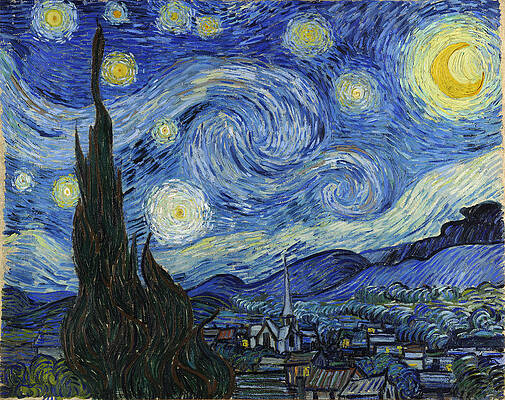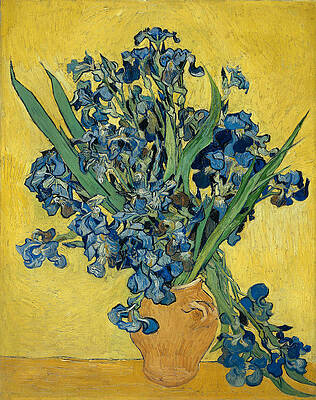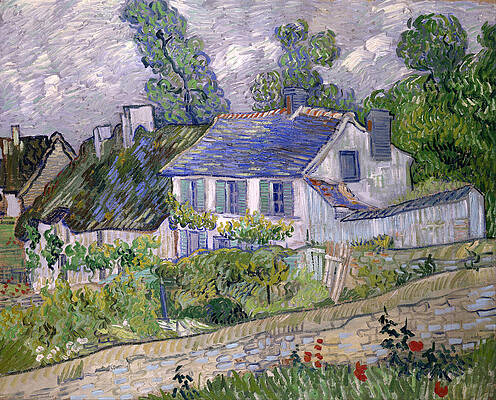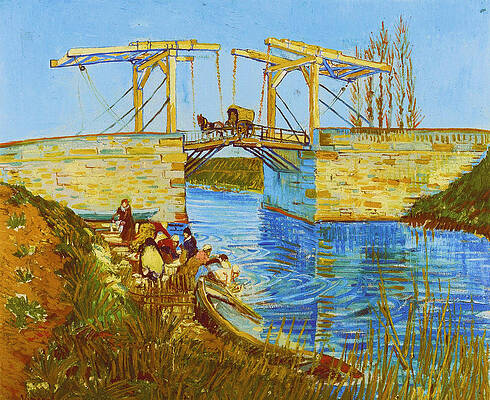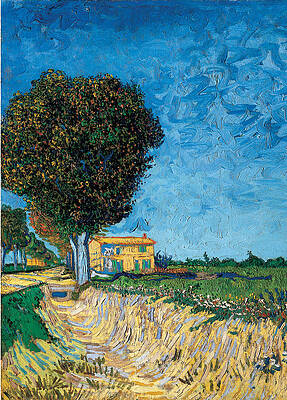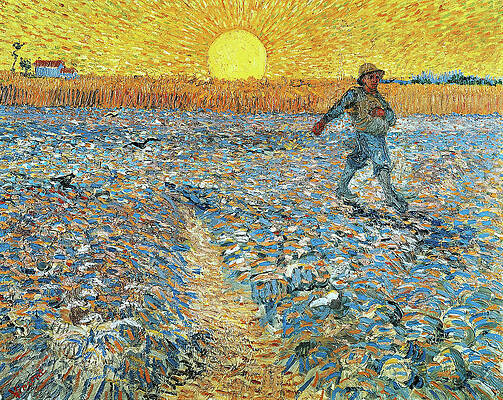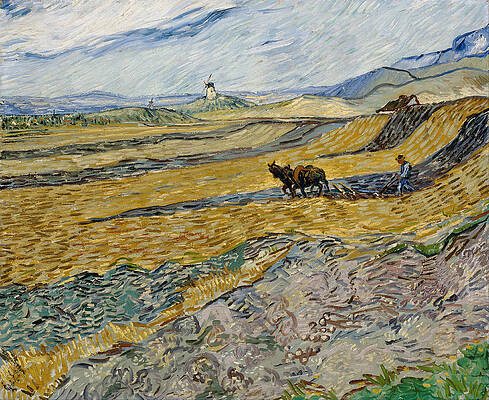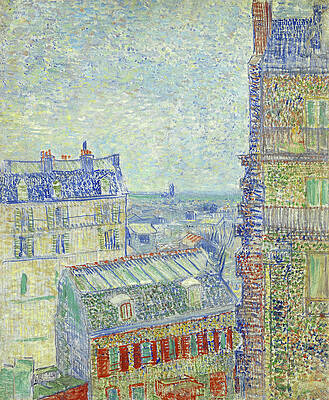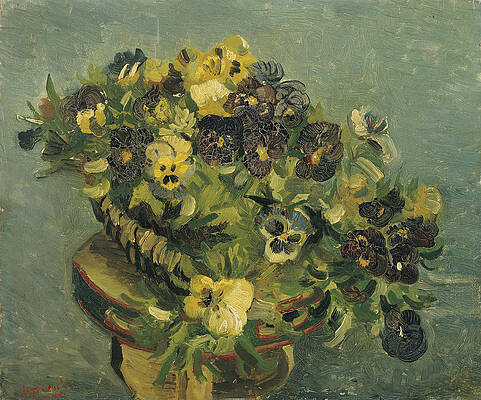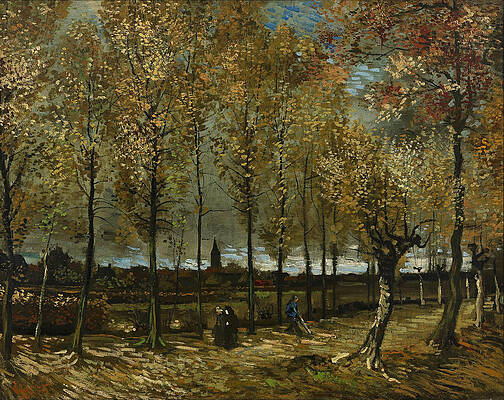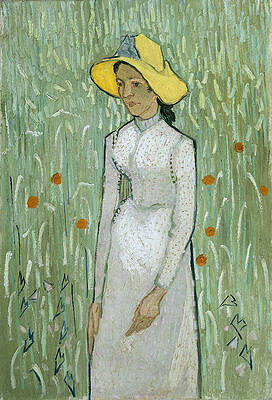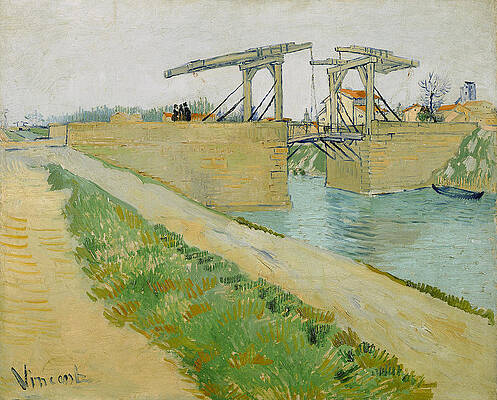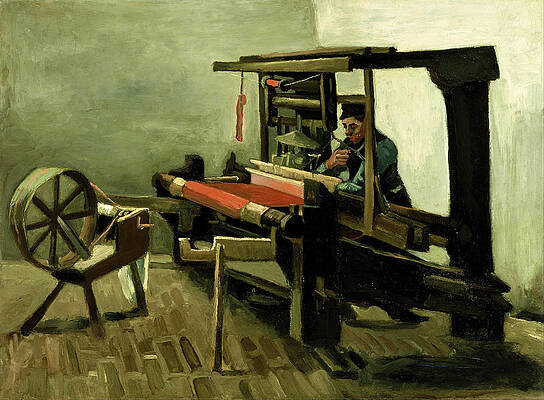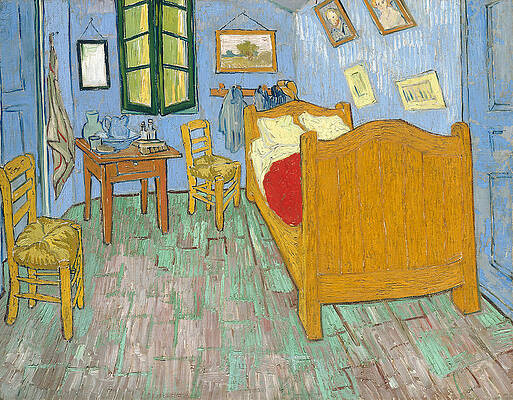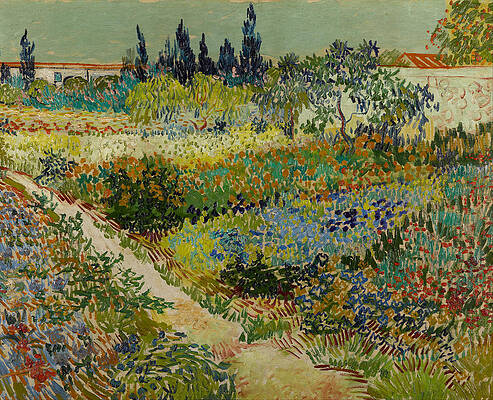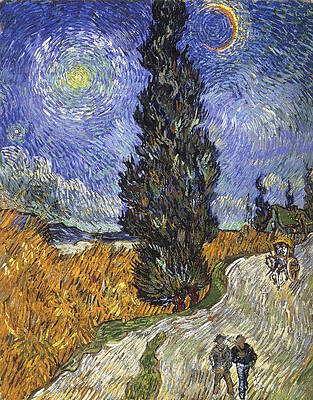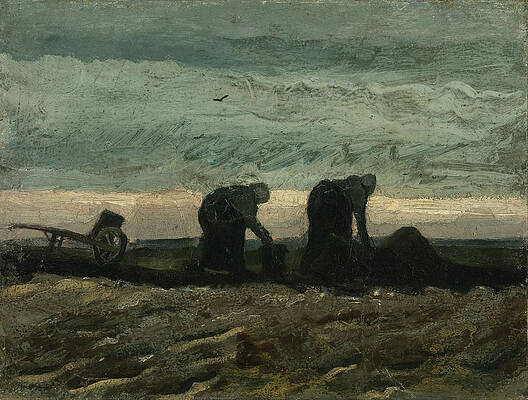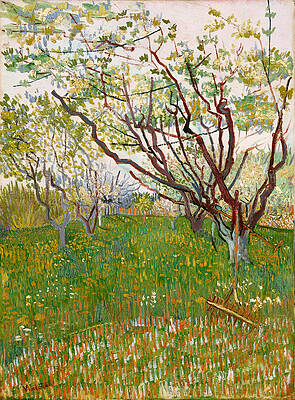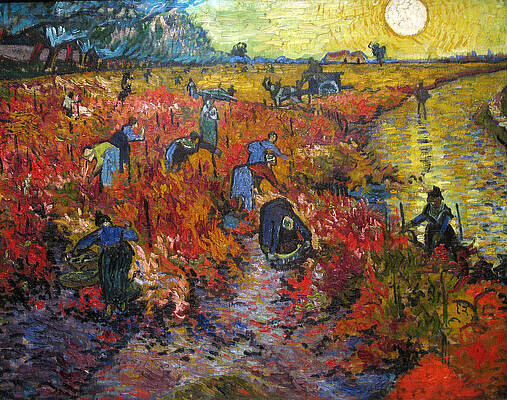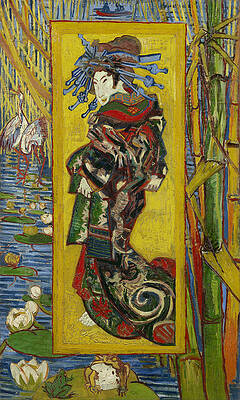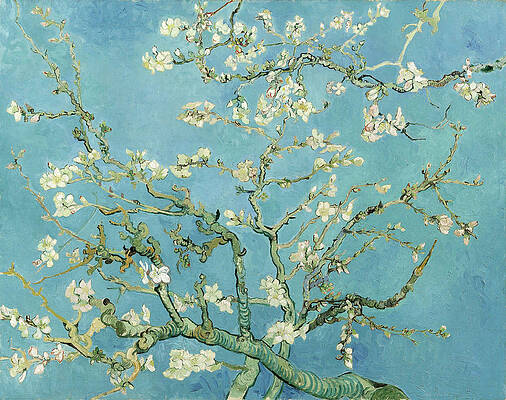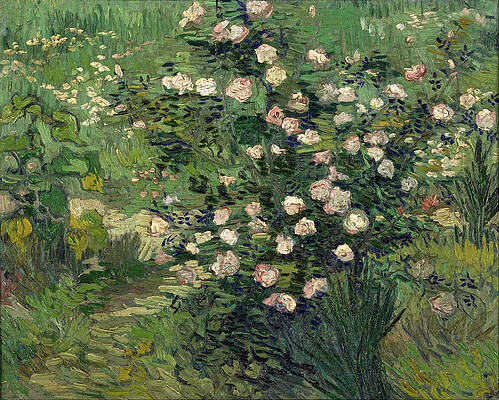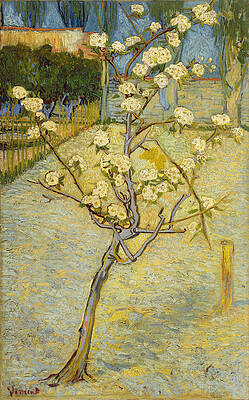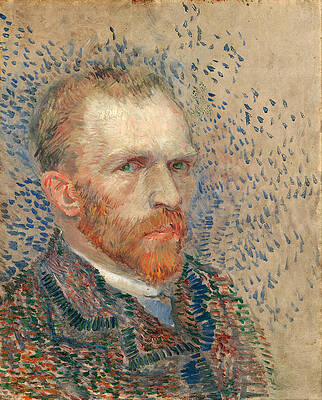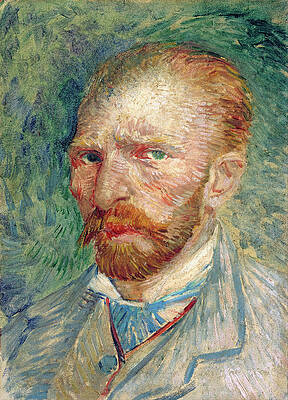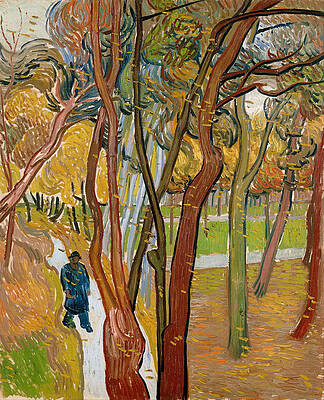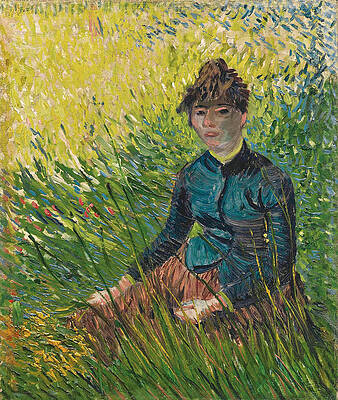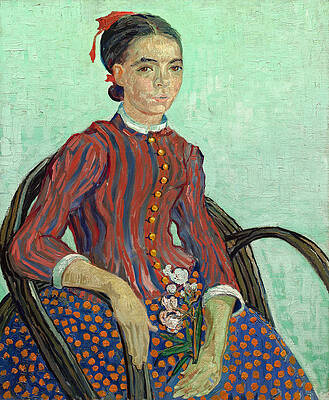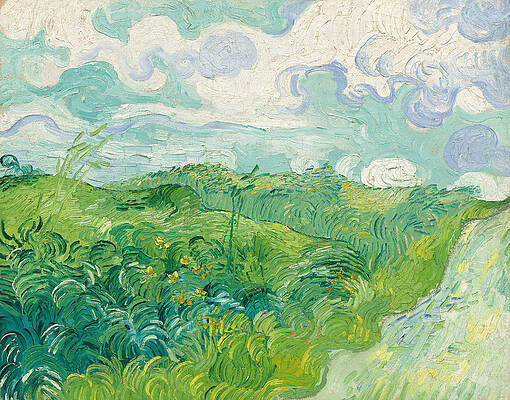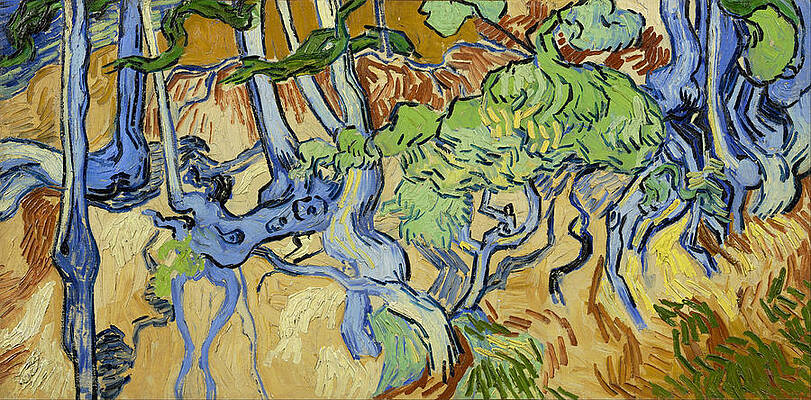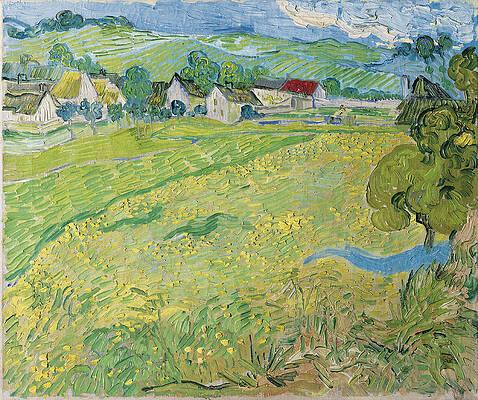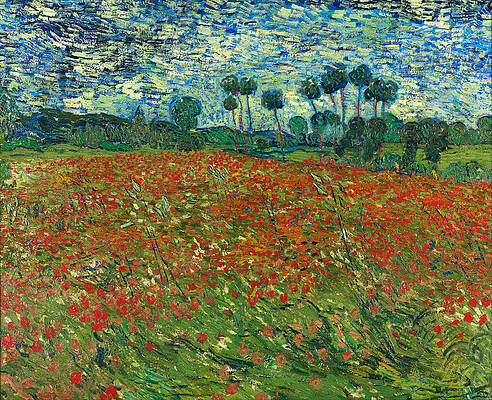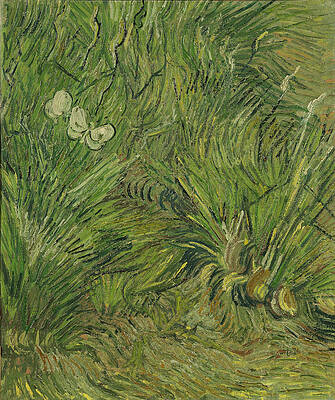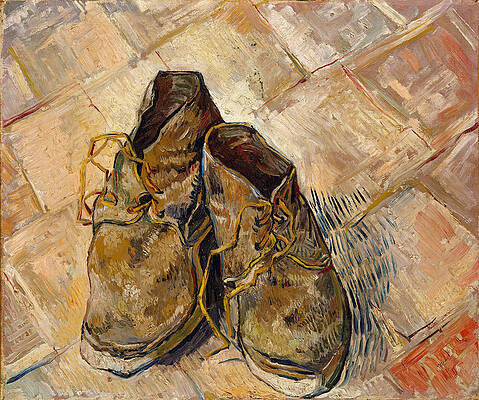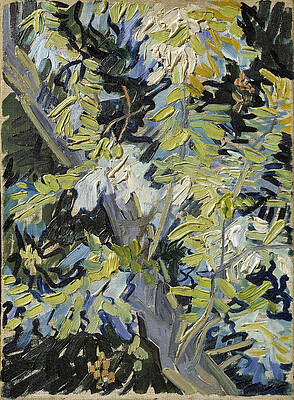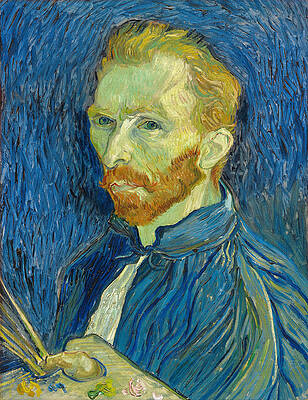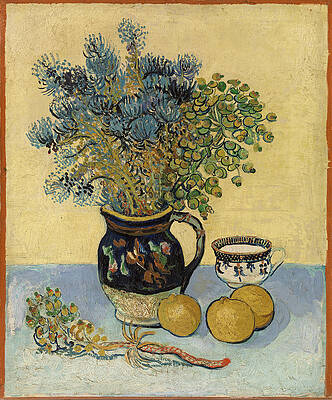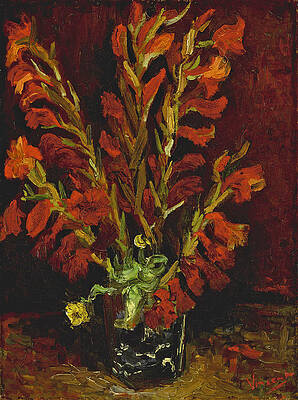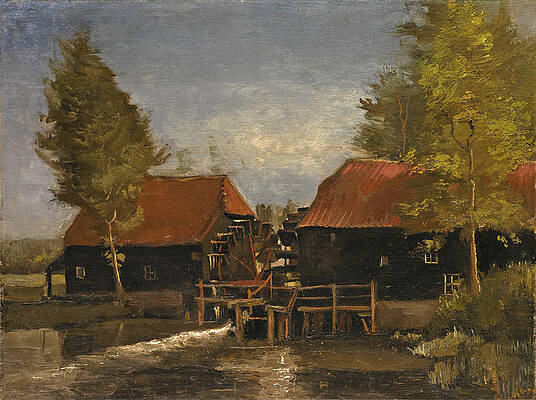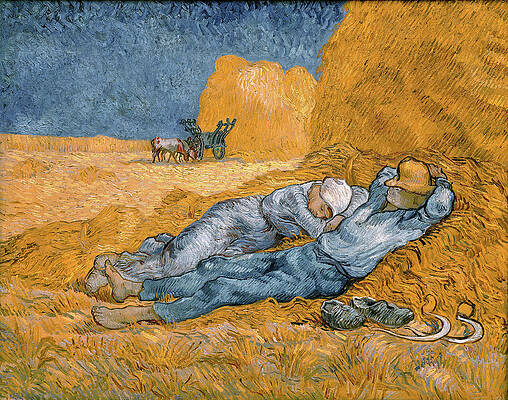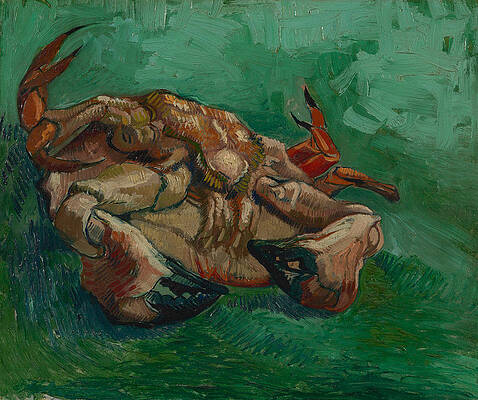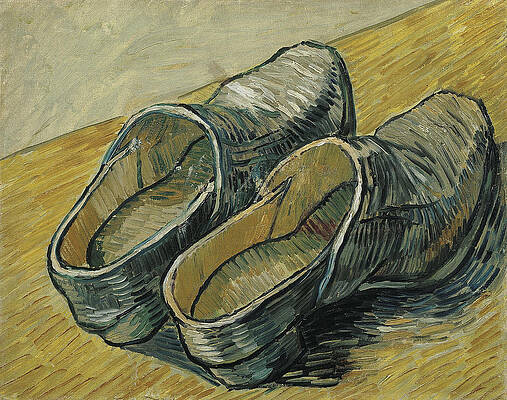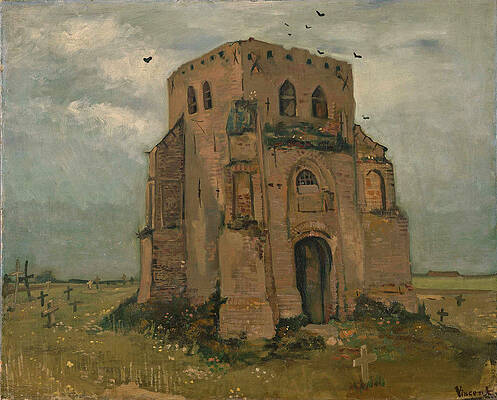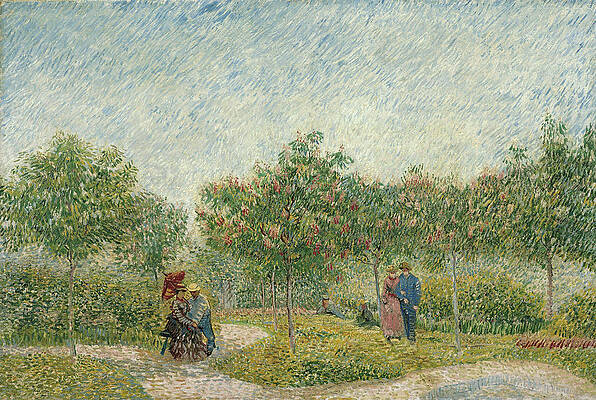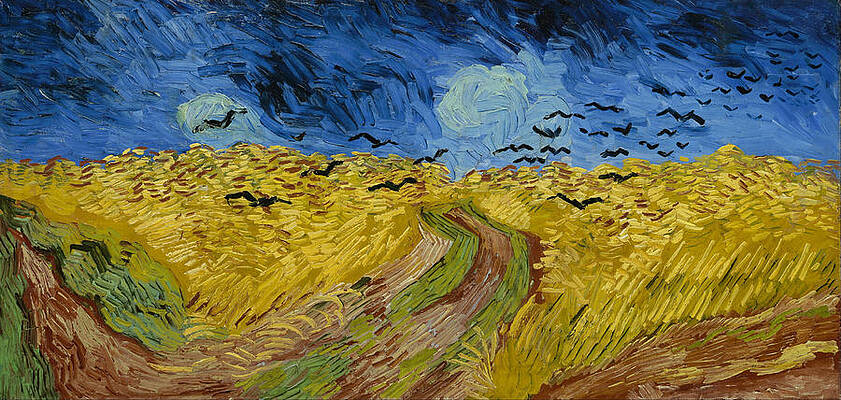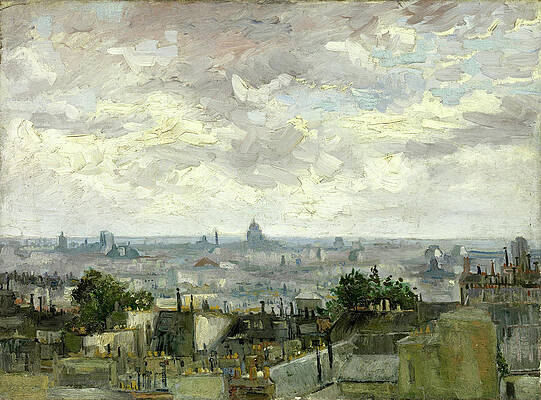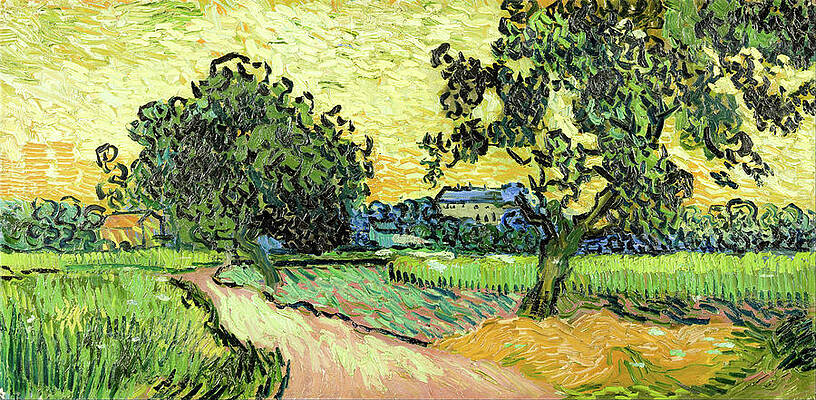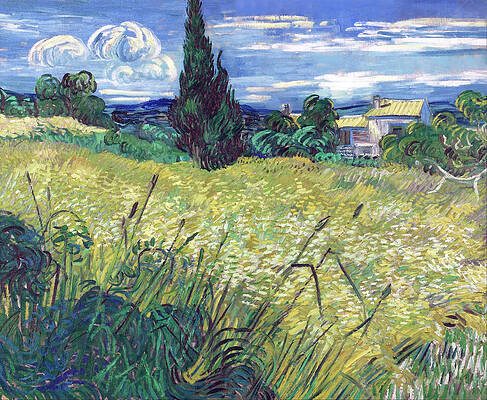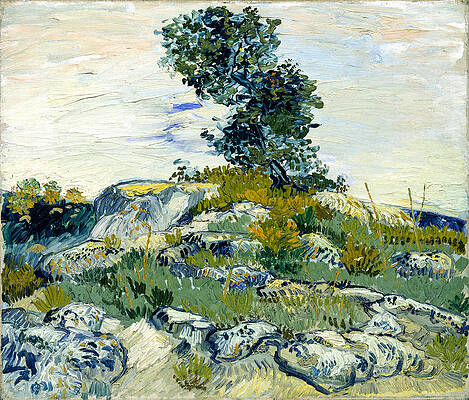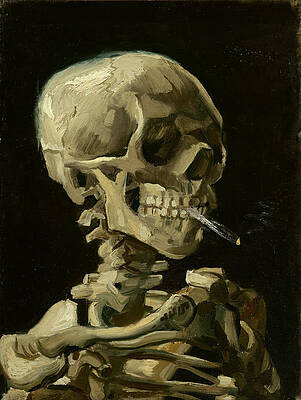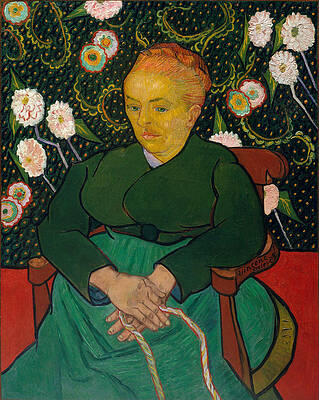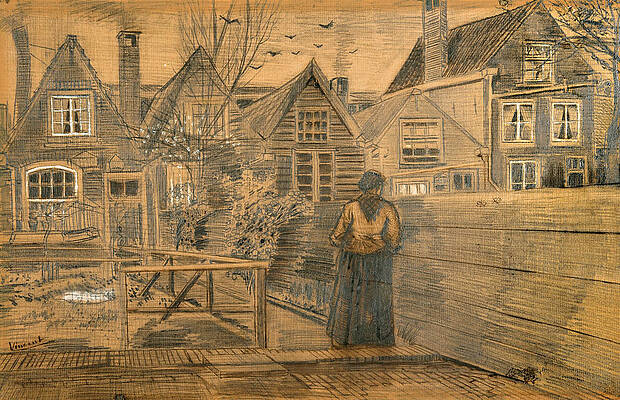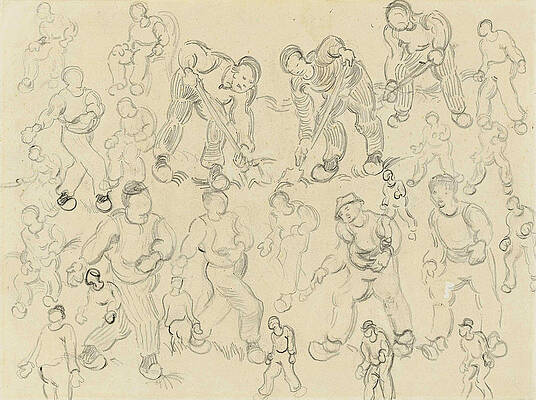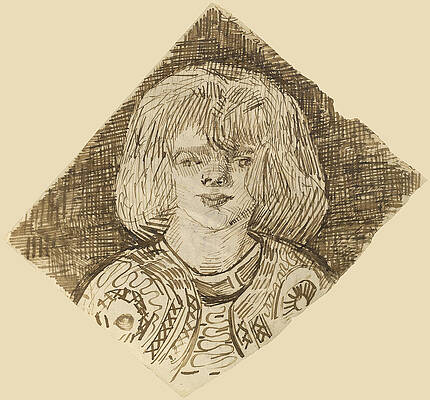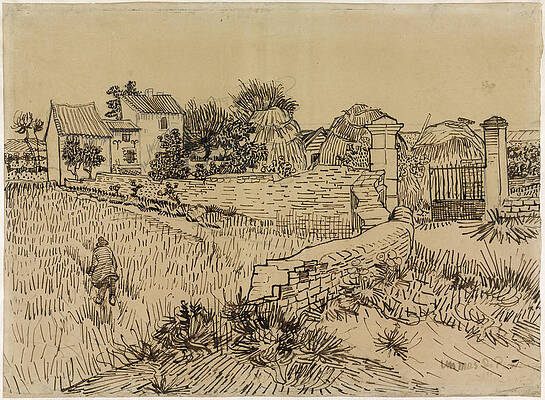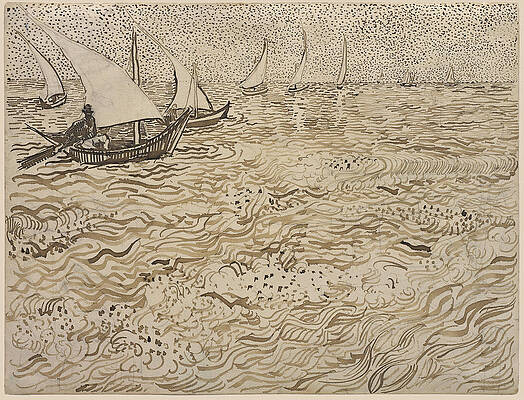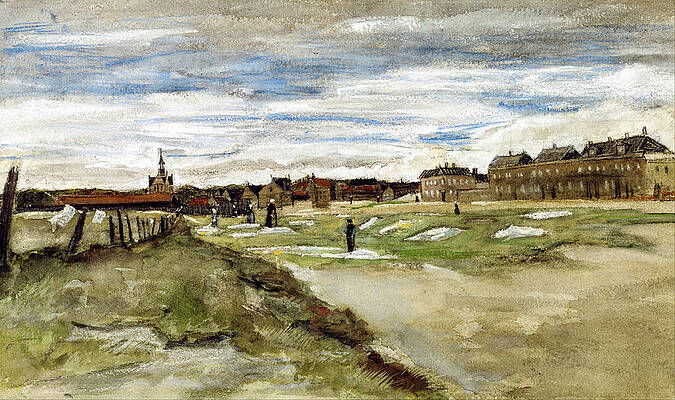Vincent Willem van Gogh
Paintings
The Starry Night
A Wheatfield with Cypresses
Irises
Sprig of flowering almond in a glass
The Mulberry Tree
Sunflowers
Vase with Oleanders and Books
Vase with gladioli and China asters
First Steps, after Millet
Houses at Auvers
Six Sunflowers
Starry Night Over the Rhone
The Church in Auvers-sur-Oise. View from the Cheve
Langlois Bridge at Arles with Women Washing
The White Orchard
A Lane near Arles
The harvest
Undergrowth with Two Figures
The Brothel
Two Lovers
The Zouave
Butterflies and poppies
The sower
Cafe Terrace at Night
Enclosed Field with Ploughman
Vase with Twelve Sunflowers
View from Theo's apartment
The Olive Trees
Fishing boats on the beach at Les Saintes-Maries-de-la-Mer
Windmills on Montmartre
Basket of pansies on a small table
Le Bebe Marcelle Roulin
Lane with Poplars near Nuenen
Still Life. Vase with Daisies and Poppies
Girl in White
Boulevard de Clichy
View from the window of Vincent's studio in winter
Sunflowers
Langlois Bridge
Sunflowers
Landscape with House and Ploughman
The Stevedores in Arles
Langlois Bridge at Arles
Weaver
Olive Trees with yellow sky and sun
The bedroom
Enclosed Wheat Field with Peasant
Flowering plum tree
Garden at Arles
Country road in Provence by night.
Wild Roses
Two women on the heath
La Berceuse. Portrait of Madame Roulin
The Flowering Orchard
Corn Harvest in Provence
The Red Vineyard
Corn Harvest in Provence
The Red Vineyard
Courtesan
Olive Trees
Olive grove
Self-Portrait
Self-portrait with straw hat
Street in Auvers-sur-Oise
Almond blossom
Roses
Roses
View of Auvers
Small pear tree in blossom
Women Picking Olives
Three White Cottages in Saintes-Maries
Sunset at Montmajour
Imperial Fritillaries in a Copper Vase
Landscape from Saint-Remy
Self-Portrait
Self-portrait
The Dance Hall in Arles
The garden of Saint Paul's Hospital. The fall of the leaves
The sheep-shearer
Emperor moth
The Road Menders
Vase with Chinese asters and gladioli
Italian Woman. Agostina Segatori
Woman in a Wheat Field
Landscape Under A Turbulent Sky
Patch of Grass
La Mousme
Flower Beds in Holland
Vase with Roses
Green Wheat Fields. Auvers
Tree-roots
View of Vessenots Near Auvers
Field with Poppies
Entrance to the Public Gardens in Arle
Garden with Butterflies
Shoes
Potato Eaters
Acacia in Flowers
Memory of the Garden at Etten. Ladies of Arles
Wheatfield With Cornflowers
Still Life with Quinces
Seascape at Saintes-Maries. Fishing Boats at Sea
Thatched Cottages in the Sunshine
The Smoker
Self-Portrait
Still Life. Majolica with Wildflowers
White House at Night
The Seine with the Pont de Clichy
The Factory at Asnieres
Still Life. Vase with Gladioli
Portrait of Joseph Roulin
Madame Roulin and Her Baby
Carafe and Dish with Citrus Fruit
Undergrowth
The raising of Lazarus
View of a butcher's shop
The Water Mill
The raising of Lazarus
View of a butcher's shop
The Water Mill
Still Life of Oranges and Lemons with Blue Gloves
The Man is at Sea
Landscape with Windswept Trees
Noon. Rest from Work
Orchards in blossom view of Arles
A crab on its back
A pair of leather clogs
The old church tower at Nuenen
Wheatfield with a reaper
Garden in Montmarte with lovers
Seascape near Les Saintes-Maries-de-la-Mer
Wheatfield with crows
Langs de Seine
Quinces lemons pears and grapes
The pink orchard
The hill of Montmartre
Avenue of poplars in autumn
Wheatfield under Thunderclouds
View of Paris
Apples
Portrait of Pere Tanguy
Portrait of Armand Roulin
Landscape at twilight
In the cafe. Agostina Segatori in Le tambourin
Green Field
The Rocks
Self-portrait with grey felt hat
Peasant woman binding sheaves
The Rocks
Head of a skeleton with a burning cigarette
La Berceuse. Woman Rocking a Cradle. Augustine-Alix Pellicot Roulin
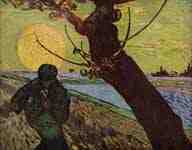
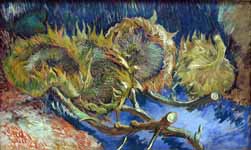

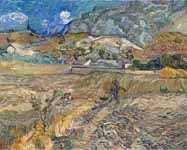
Enclosed Wheat Field with Peasant
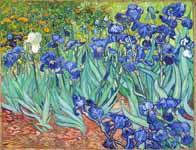

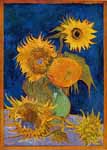
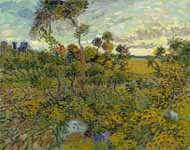
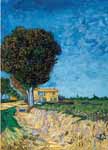
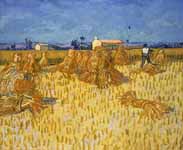
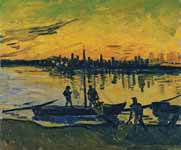
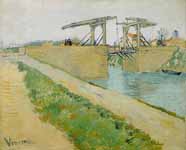
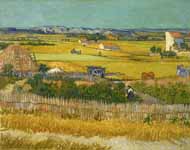
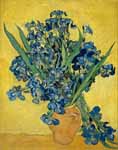
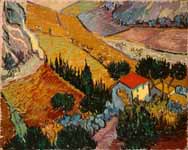
Landscape with House and Ploughman

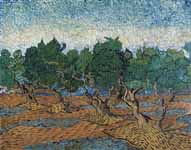
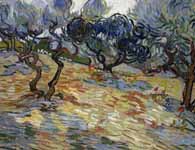

Olive Trees with yellow sky and sun
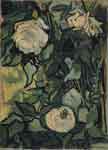
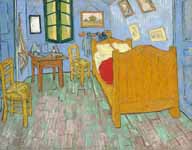
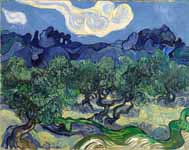


Langlois Bridge at Arles with Women Washing


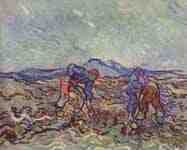
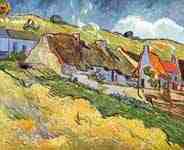

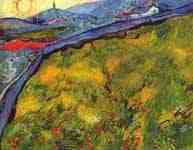
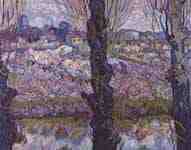

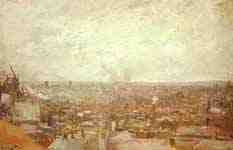
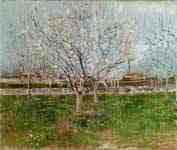
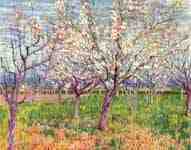
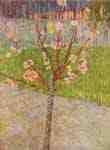
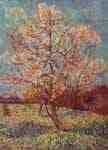
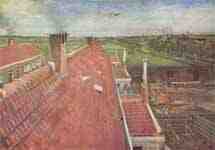
Roofs , view from Atelier van Gogh on Schenkweg
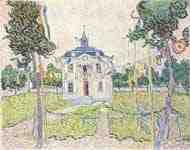

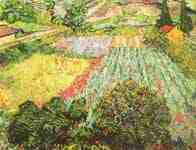
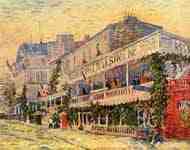
The Restaurant de la Sirene at Asnieres
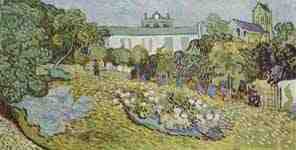
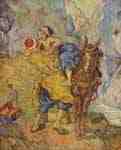
The Good Samaritan (after Delacroix)
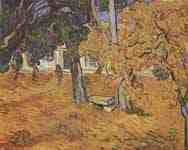
The park of the hospital Saint-Paul in Saint -Remy

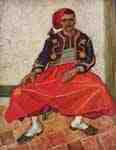
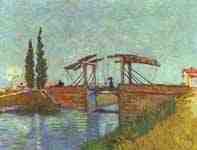
The Anglois Bridge at Arles ( The Drawbridge )
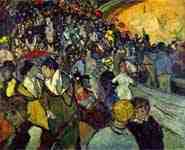
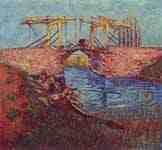
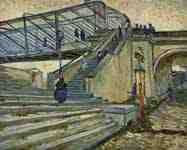
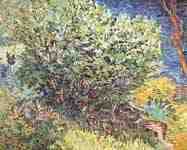
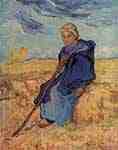

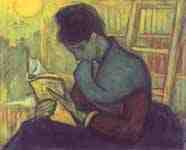
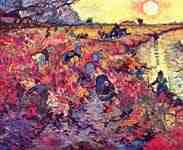
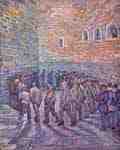

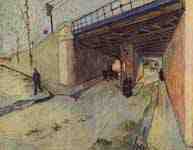
Railway bridge over the road to Tarascon
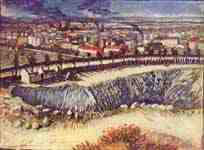

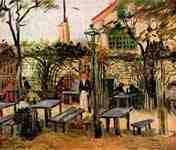
Garden restaurant " La Guinguette " in Montmartre
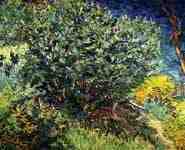

Vegetable Gardens in Montmartre (La Butte Montmartre)

Vegetable Gardens in Montmartre

Wheat Field with poppies and lark
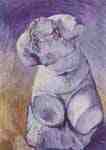
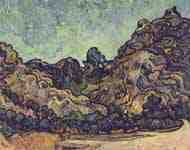
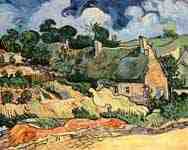
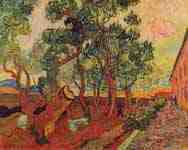

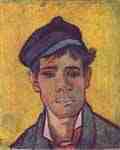


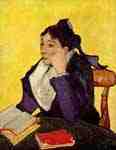
L' Arlesienne ( portrait of Madame Ginoux)

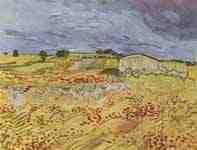
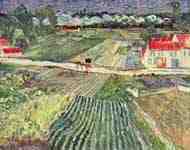
Landscape at Auvers in the Rain

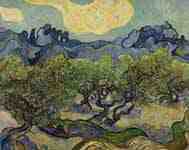
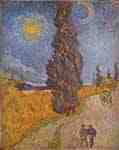
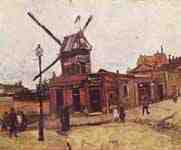
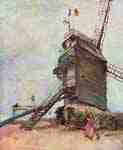

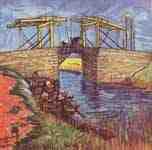
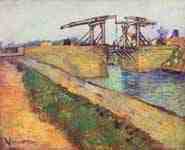

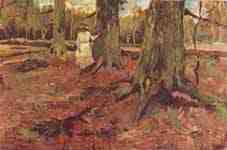

Mademoiselle Gachet at the Piano
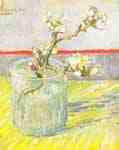

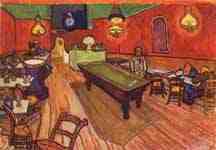
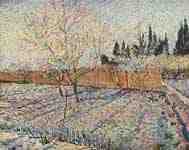


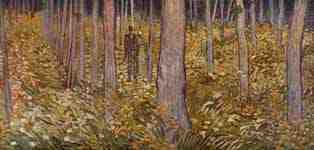
Couple having walk in the woods
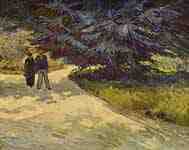
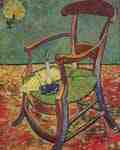
Paul Gauguin's Chair ( The Empty Chair )
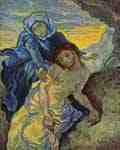
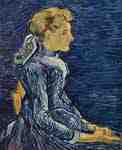
Portrait of Mademoiselle Ravoux
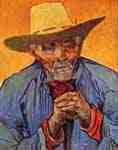
Portrait of the old farmer Patience Escalier

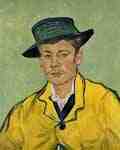

Portrait of the Postman Joseph Roulin
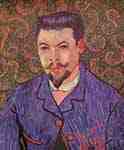
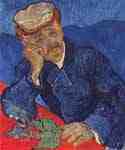
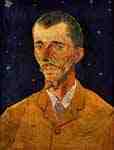

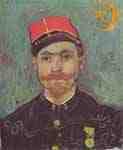
Portrait of Paul -Eugène Milliet
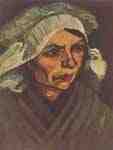
Portrait of a peasant woman with white hood
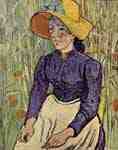
Portrait of a young peasant girl
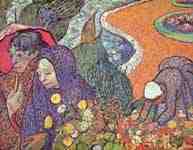
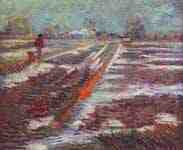
Snow-covered fields before Arles
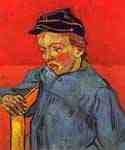
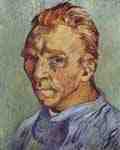
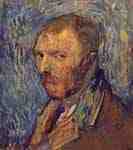
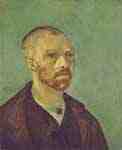

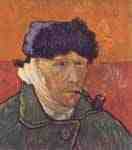
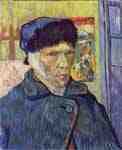
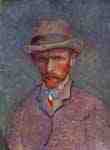
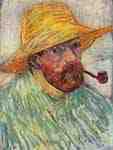
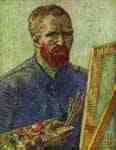
Self- Portrait in Front of Easel
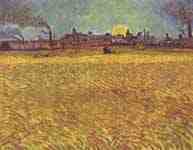

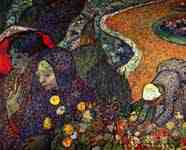
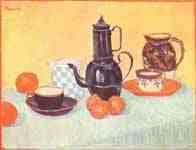
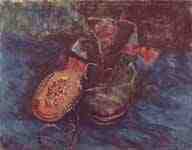
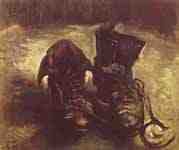

Still life of a vase with daisies and anemones
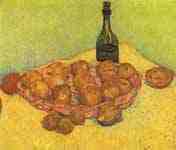
Still Life with Bottle, Lemons and Oranges
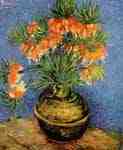
Still Life with imperial crowns in a bronze vase
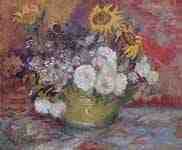
Still Life with Roses and Sunflowers

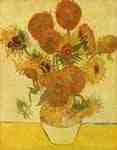
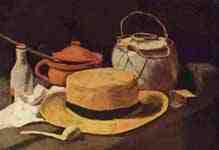
Still Life with Straw Hat and Pipe
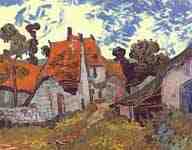
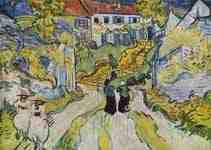
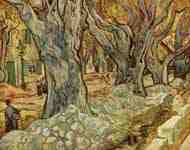
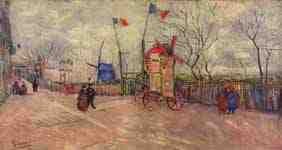
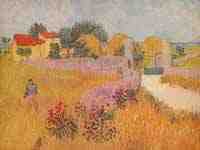

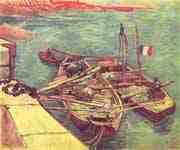
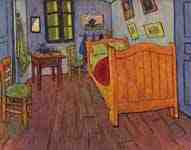
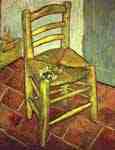
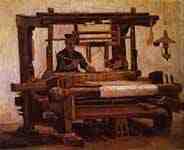
Drawings
Peasant with Sickle Seen from Behind
The Road to Tarascon
Old man praying
Houses seen from the back window of Sien's Mother's House
Studies of Peasants Working. Sowers and Diggers
Corridor in the Asylum
Sorrow
Cafe Terrace at Night
Portrait of Joseph Roulin
Fishing Boats at Saintes-Maries-de-la-Mer
Head of a Girl
Farm in Provence
Worn Out
Potato Eaters
People sitting on a Bench in Bezuidenhout. The Hague
The Laundress
Head of a Man
The Corner Of The Park
Boats at Saintes-Maries
Man Polishing a Boot
The Magrot House, Cuesmes
Harvest, The Plain of La Crau
The Zandmennik House
The Harvest
Beach at Scheveningen, People Strolling on the Beach
Ploughman in the Fields near Arles
Old Man Carrying a Bucket
Tassel hyancinth
Bleaching Ground at Scheveningen
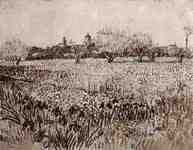

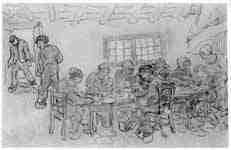


The " Groote market " in Antwerp
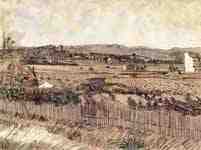
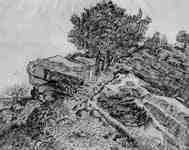

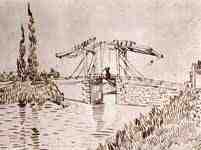
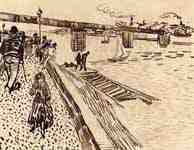
The iron bridge at Trinquetaille
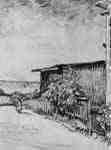

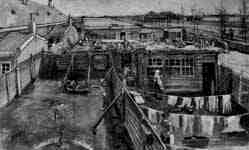
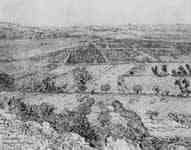
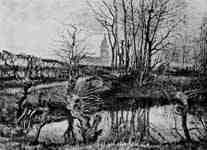

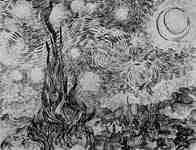
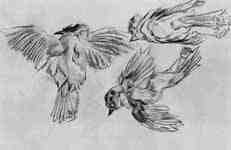

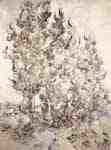
Illustrations

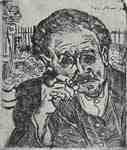
Fine Art Prints | Greeting Cards | Phone Cases | Lifestyle | Face Masks | Men's , Women' Apparel | Home Decor | jigsaw puzzles | Notebooks | Tapestries | ...
Vincent Willem van Gogh (Dutch: [ˈvɪnsɛnt ˈʋɪləm vɑn ˈɣɔx] ;[note 1] 30 March 1853 – 29 July 1890) was a Post-Impressionist painter. He was a Dutch artist whose work had a far-reaching influence on 20th-century art. His output includes portraits, self portraits, landscapes and still lifes of cypresses, wheat fields and sunflowers. He drew as a child but did not paint until his late twenties; he completed many of his best-known works during the last two years of his life. In just over a decade, he produced more than 2,100 artworks, including 860 oil paintings and more than 1,300 watercolors, drawings, sketches and prints.
Van Gogh was born to upper middle class parents and spent his early adulthood working for a firm of art dealers. He traveled between The Hague, London and Paris, after which he taught in England at Isleworth and Ramsgate. He was deeply religious as a younger man and aspired to be a pastor. From 1879 he worked as a missionary in a mining region in Belgium, where he began to sketch people from the local community. In 1885 he painted The Potato Eaters, considered his first major work. His palette then consisted mainly of somber earth tones and showed no sign of the vivid coloration that distinguished his later paintings. In March 1886, he moved to Paris and discovered the French Impressionists. Later, he moved to the south of France and was influenced by the strong sunlight he found there. His paintings grew brighter in color, and he developed the unique and highly recognizable style that became fully realized during his stay in Arles in 1888.
After years of anxiety and frequent bouts of mental illness,[1][2] he died aged 37 from a self-inflicted gunshot wound. The extent to which his mental health affected his painting has been widely debated by art historians. Despite a widespread tendency to romanticize his ill health, modern critics see an artist deeply frustrated by the inactivity and incoherence wrought through illness. His late paintings show an artist at the height of his abilities, completely in control, and according to art critic Robert Hughes, "longing for concision and grace".[3]
Letters
See also: The Letters of Vincent van Gogh
Headshot photo of the artist as a cleanshaven young man. He has thick, ill-kempt, wavy hair, a high forehead, and deep-set eyes with a wary, watchful expression.
Vincent c. 1873 aged 19. This photograph was taken at the time when he was working at the branch of Goupil & Cie's gallery in The Hague.[4][5]
Headshot photo of a young man, similar in appearance to his brother, but neat, well-groomed and calm.
Theo in 1888 at 31. Theo was a life-long supporter and friend to his brother. The two are buried together at Auvers-sur-Oise.
The most comprehensive primary source for the understanding of Van Gogh as an artist and as a man is the collection of letters between him and his younger brother, art dealer Theo van Gogh.[6] They lay the foundation for most of what is known about his thoughts and beliefs.[7][8] Theo provided his brother with financial and emotional support. Their lifelong friendship, and most of what is known of Vincent's thoughts and theories of art, is recorded in the hundreds of letters exchanged between 1872 and 1890. There are more than 600 from Vincent to Theo, and 40 from Theo to Vincent.
Although many are undated, art historians have generally been able to put them in chronological order. Problems remain, mainly in dating those from Arles, although it is known that during that period Van Gogh wrote around 200 letters to friends in Dutch, French and English.[9] The period when Vincent lived in Paris is the most difficult to analyze because the brothers lived together and had no need to correspond.[10] In addition to letters to and from Theo, there are other surviving documents including to Van Rappard, Émile Bernard, Van Gogh's sister Wil and her friend Line Kruysse.[11] The letters were first annotated in 1913 by Theo's widow, Johanna van Gogh-Bonger, who later said that she published with "trepidation" because she did not want the drama in the artist's life to overshadow his work. Van Gogh himself was an avid reader of other artists' biographies and expected their lives to be in keeping with the character of their art.[6]
Biography
Main article: Vincent van Gogh chronology
Early life
See also: Van Gogh's family in his art
Vincent Willem van Gogh was born on 30 March 1853 in Groot-Zundert, a village close to Breda, in the predominantly Catholic province of North Brabant in the southern Netherlands.[12][13] He was the oldest surviving child of Theodorus van Gogh, a minister of the Dutch Reformed Church, and Anna Cornelia Carbentus. Vincent was given the name of his grandfather, and of a brother stillborn exactly a year before his birth.[note 2] The practice of reusing a name was not unusual. Vincent was a common name in the Van Gogh family: his grandfather, Vincent (1789–1874), had received his degree of theology at the University of Leiden in 1811. Grandfather Vincent had six sons, three of whom became art dealers, including another Vincent -referred to in the letters as "Uncle Cent". Grandfather Vincent had perhaps been named in turn after his own father's uncle, the successful sculptor Vincent van Gogh (1729–1802).[14][15] Art and religion were the two occupations to which the Van Gogh family gravitated. His brother Theodorus "Theo" was born on 1 May 1857. He had another brother, Cor, and three sisters: Elisabeth, Anna, and Willemina "Wil".[16]
black and white formal headshot photo of the artist as a boy in jacket and tie. He has thick curly hair and very pale-colored eyes with a wary, uneasy expression.
Vincent c. 1866, approx. age 13
Vincent was a serious, silent and thoughtful child. He attended the village school at Zundert from 1860, where a single Catholic teacher taught around 200 pupils. From 1861, he and his sister Anna were taught at home by a governess, until 1 October 1864, when he was placed in Jan Provily's boarding school at Zevenbergen about 20 miles (32 km) away. He was distressed to leave his family home. On 15 September 1866, he went to the new middle school, Willem II College in Tilburg. Constantijn C. Huysmans, a successful artist in Paris, taught Van Gogh to draw at the school and advocated a systematic approach to the subject. Vincent's interest in art began at an early age. He began to draw as a child and continued making drawings throughout the years leading to his decision to become an artist. Though well-done and expressive,[17] his early drawings do not approach the intensity he developed in his later work.[18] In March 1868, Van Gogh abruptly left school and returned home. A later comment on his early years was in an 1883 letter to Theo in which he wrote, "My youth was gloomy and cold and sterile."[19]
Van Gogh's drawing of 87 Hackford Road
In July 1869, his uncle Cent helped him obtain a position with the art dealer Goupil & Cie in The Hague. After his training, in June 1873, Goupil transferred him to London, where he lodged at 87 Hackford Road, Brixton, and worked at Messrs. Goupil & Co., 17 Southampton Street.[20] This was a happy time for Vincent; he was successful at work and was, at 20, earning more than his father. Theo's wife later remarked that this was the happiest year of his life. He fell in love with his landlady's daughter, Eugénie Loyer, but when he finally confessed his feelings to her, she rejected him, saying that she was secretly engaged to a former lodger. He became increasingly isolated and fervent about religion; his father and uncle arranged for him to be transferred to Paris, where he became resentful at how art was treated as a commodity, a fact apparent to customers. On 1 April 1876, Goupil terminated his employment.[21]
The house "Holme Court" in Isleworth, where Van Gogh stayed in 1876 [22] [23]
Van Gogh returned to England for unpaid work as a supply teacher in a small boarding school in Ramsgate. When the proprietor of the school relocated to Isleworth, Middlesex, Van Gogh moved with him, taking the train to Richmond and the remainder of the journey on foot.[24] The arrangement did not work out and he left to become a Methodist minister's assistant, following his wish to "preach the gospel everywhere".[25] At Christmas, he returned home and found work in a bookshop in Dordrecht for six months. He was not happy in this new position, and he spent much of his time either doodling or translating passages from the Bible into English, French, and German.[26] According to his roommate of the time, a young teacher named Görlitz, Van Gogh ate frugally, and preferred not to eat meat.[27][note 3]
Van Gogh's religious zeal grew until he felt he had found his true vocation. To support his effort to become a pastor, his family sent him to Amsterdam to study theology in May 1877, where he stayed with his uncle Jan van Gogh, a naval Vice Admiral.[28][29] Vincent prepared for the entrance exam with his uncle Johannes Stricker, a respected theologian who published the first "Life of Jesus" in the Netherlands. Van Gogh failed the exam, and left his uncle Jan's house in July 1878. He then undertook, but failed, a three-month course at the Vlaamsche Opleidingsschool, a Protestant missionary school in Laeken, near Brussels.[30]
photo of a two-story brick house on the left partially obscured by trees with a front lawn and with a row of trees on the right
The house where Van Gogh stayed in Cuesmes in 1880; while living here he decided to become an artist
In January 1879, he took a temporary post as a missionary in the village of Petit Wasmes[note 4] in the coal-mining district of Borinage in Belgium at Charbonnage de Marcasse, Van Gogh lived like those he preached to, sleeping on straw in a small hut at the back of the baker's house where he was staying. The baker's wife reported hearing Van Gogh sobbing at night in the hut. His choice of squalid living conditions did not endear him to the appalled church authorities, who dismissed him for "undermining the dignity of the priesthood". He then walked to Brussels,[31] returned briefly to the village of Cuesmes in the Borinage, but gave in to pressure from his parents to return home to Etten. He stayed there until around March the following year,[note 5] a cause of increasing concern and frustration for his parents. There was particular conflict between Vincent and his father, who made inquiries about having Vincent committed to the lunatic asylum at Geel.[32][note 6]
He returned to Cuesmes, where he lodged until October with a miner named Charles Decrucq.[33] He became interested in the people and scenes around him, and recorded his time there in his drawings, following Theo's suggestion that he take up art in earnest. He traveled to Brussels that autumn, intending to follow Theo's recommendation to study with the prominent Dutch artist Willem Roelofs, who persuaded him—in spite of his aversion to formal schools of art—to attend the Académie Royale des Beaux-Arts in Brussels, where he registered on 15 November 1880. At the Académie, he studied anatomy and the standard rules of modeling and perspective, about which he said, "you have to know just to be able to draw the least thing."[34] Van Gogh aspired to become an artist in God's service, stating: "to try to understand the real significance of what the great artists, the serious masters, tell us in their masterpieces, that leads to God; one man wrote or told it in a book; another in a picture."[35]
Etten, Drenthe and The Hague
See also: Early works of Vincent van Gogh
Kee Vos Stricker with her son Jan c. 1879/1880.
Van Gogh moved with his parents to the Etten countryside in April 1881. He continued drawing, often using neighbors as subjects. During the first summer, he took long walks with his recently widowed cousin, Kee Vos-Stricker, daughter of his mother's older sister and Johannes Stricker.[36] Kee was seven years older than Van Gogh and had an eight-year-old son. He proposed marriage, but she refused with the words "No, nay, never" ("nooit, neen, nimmer").[37][38] Late that November, Van Gogh wrote a strongly worded letter to Johannes,[39] and then hurried to Amsterdam, where he spoke with him on several occasions.[40] Kee refused to see him, and her parents wrote: "Your persistence is disgusting." In desperation, he held his left hand in the flame of a lamp, with the words: "Let me see her for as long as I can keep my hand in the flame."[41] He did not recall the event well, but later assumed that his uncle blew out the flame. Kee's father made it clear to him that Kee's refusal should be heeded and that the two would not be married[42] because of Van Gogh's inability to support himself.[43] Van Gogh's perception of his uncle and former tutor's hypocrisy affected him deeply and put an end to his religious faith forever.[44] That Christmas, he refused to go to church, quarreling violently with his father as a result and leading him to leave home the same day for The Hague.[45][46]
He settled in The Hague in January 1882, where he visited his cousin-in-law, Anton Mauve, a Dutch realist painter and a leading member of the Hague School. Mauve introduced him to painting in both oil and watercolor and lent him money to set up a studio,[47] but the two soon fell out, possibly over the issue of drawing from plaster casts.[48] Van Gogh's uncle Cornelis, an art dealer, commissioned 12 ink drawings of views of the city, which Van Gogh completed soon after arriving in The Hague, along with a further seven drawings that May.[49] In June, he spent three weeks in a hospital, suffering from gonorrhea,[50] and that summer, he began to paint in oil.[51]
A view from a window of pale red rooftops. A bird flying in the blue sky and in the near distance fields and to the right, the town and others buildings can be seen. In the distant horizon are smokestacks
Rooftops, View from the Atelier The Hague, 1882, watercolour, Private collection.
Mauve appears to have suddenly gone cold towards Van Gogh and did not return some of his letters.[52] Van Gogh supposed that Mauve had learned of his new domestic arrangement with an alcoholic prostitute, Clasina Maria "Sien" Hoornik (1850–1904), and her young daughter.[53][54] He had met Sien towards the end of January, when she had a five-year-old daughter and was pregnant. She had already borne two children who died, although Van Gogh was unaware of this;[55] and on 2 July, she gave birth to a baby boy, Willem.[56] When Van Gogh's father discovered the details of their relationship, he put pressure on his son to abandon Sien and her children, although Vincent at first defied him.[57] Vincent considered moving the family out of the city, but in the end, in the autumn of 1883 after a year with her, he left Sien and the two children.[58] It is possible that lack of money pushed Sien back to prostitution; the home became less happy, and Van Gogh may have felt family life was irreconcilable with his artistic development. When he left, Sien gave her daughter to her mother and baby Willem to her brother. She then moved to Delft, and later to Antwerp.[59]
Willem remembered being taken to visit his mother in Rotterdam at around the age of 12, where his uncle tried to persuade Sien to marry in order to legitimize the child. Willem remembered his mother saying, "But I know who the father is. He was an artist I lived with nearly 20 years ago in The Hague. His name was Van Gogh." She then turned to Willem and said "You are called after him."[60] While Willem believed himself Van Gogh's son, the timing of his birth makes this unlikely.[61] In 1904, Sien drowned herself in the River Scheldt.[62] Van Gogh moved to the Dutch province of Drenthe, in the northern Netherlands. That December, driven by loneliness, he went to stay with his parents, who had been posted to Nuenen, North Brabant.[62]
Emerging artist
See also: Still life paintings by Vincent van Gogh (Netherlands)
Nuenen and Antwerp (1883–1886)
group of five sit around a small wooden table with a large platter of food, while one person pours beverages from a kettle in a dark room with an overhead lantern
The Potato Eaters, 1885, Van Gogh Museum
In Nuenen, Van Gogh devoted himself to drawing, and he gave money to boys to bring him birds' nests for subject matter for paintings,[note 7] and he made many sketches and paintings of weavers in their cottages.[63] In autumn 1884, Margot Begemann, a neighbor's daughter and ten years his senior, often joined him on his painting forays. She fell in love, and he reciprocated – though less enthusiastically. They decided to marry, but the idea was opposed by both families. As a result, Margot took an overdose of strychnine. She was saved when Van Gogh rushed her to a nearby hospital.[56] On 26 March 1885, his father died of a heart attack and he grieved deeply at the loss.[64]
A human skull, bare bones of a neck and shoulders. The skull has a lit cigarette between its teeth.
Skull of a Skeleton with Burning Cigarette, 1885–1886, oil on canvas, Van Gogh Museum
For the first time there was interest from Paris in his work. That spring he completed what is generally considered his first major work, The Potato Eaters, the culmination of several years work painting peasant character studies.[65] In August 1885, his work was first exhibited, in the windows of a paint dealer Leurs, in The Hague. After one of his young peasant sitters became pregnant that September, Van Gogh was accused of forcing himself upon her[note 8] and the Catholic village priest forbade parishioners from modeling for him.[66]
During 1885, he painted several groups of still-life paintings. From this period, Still-Life with Straw Hat and Pipe and Still-life with Earthen Pot and Clogs are characterized by smooth, meticulous brushwork and fine shading of colors.[67] During his two-year stay in Nuenen, he completed numerous drawings and watercolors and nearly 200 oil paintings. His palette consisted mainly of somber earth tones, particularly dark brown, and he showed no sign of developing the vivid coloration that distinguishes his later, best-known work. When he complained that Theo was not making enough effort to sell his paintings in Paris, his brother wrote back, telling him that the paintings were too dark and not in line with the current style of bright Impressionist paintings.[68]
He moved in November 1885 to Antwerp and rented a small room above a paint dealer's shop in the Rue des Images (Lange Beeldekensstraat).[69] He had little money and ate poorly, preferring to spend the money Theo sent on painting materials and models. Bread, coffee, and tobacco were his staple intake. In February 1886, he wrote to Theo saying that he could only remember eating six hot meals since May of the previous year. His teeth became loose and painful.[70] While in Antwerp, he applied himself to the study of color theory and spent time in museums, particularly studying the work of Peter Paul Rubens, gaining encouragement to broaden his palette to carmine, cobalt, and emerald green. He bought Japanese Ukiyo-e woodcuts in the docklands, and incorporated their style into the background of some of his paintings.[71] While in Antwerp, Van Gogh began to drink absinthe heavily.[72] He was treated by Dr. Amadeus Cavenaile, whose practice was near the docklands,[note 9] possibly for syphilis;[note 10] the treatment of alum irrigation and sitz baths was jotted down by Van Gogh in one of his notebooks.[73] Despite his rejection of academic teaching, he took the higher-level admission exams at the Academy of Fine Arts in Antwerp, and, in January 1886, matriculated in painting and drawing. For most of February, he was ill and run down by overwork, a poor diet, and excessive smoking.[74]
Paris (1886–1888)
See also: Japonaiserie (Van Gogh) and Still life paintings by Vincent van Gogh (Paris)
Multi-colored portrait of a far eastern cortesan with elaborate hair ornamentation, colorful robelike garment, and a border depicting marshland waters and reeds.
Courtesan (after Eisen), 1887, Van Gogh Museum
Portrait of a tree with blossoms and with far eastern alphabet letters both in the portrait and along the left and right borders.
The Blooming Plumtree (after Hiroshige), 1887, Van Gogh Museum
Portrait of a man of a bearded man facing forward, holding his own hands in his lap; wearing a hat, blue coat, beige collared shirt and brown pants; sitting in front of a background with various tiles of far eastern and nature themed art.
Portrait of Père Tanguy (1887), Musée Rodin
Van Gogh traveled to Paris in March 1886, where he shared Theo's Rue Laval apartment on Montmartre, to study at Fernand Cormon's studio. In June, they took a larger apartment further uphill, at 54 Rue Lepic. Because they had no need to write letters to communicate, little is known about this stay in Paris.[75] In Paris, he painted portraits of friends and acquaintances, still-life paintings, views of Le Moulin de la Galette, scenes in Montmartre, Asnières, and along the Seine. During his stay in Paris, he collected more Japanese ukiyo-e woodblock prints; he became interested in such works when, in 1885, in Antwerp he used them to decorate the walls of his studio. He collected hundreds of prints, which are visible in the backgrounds of several of his paintings. In his 1887 Portrait of Père Tanguy, several can be seen hanging on the wall behind the main figure. In The Courtesan or Oiran (after Kesai Eisen) (1887), Van Gogh traced the figure from a reproduction on the cover of the magazine Paris Illustre, which he then graphically enlarged in the painting.[76] His 1888 Plum Tree in Blossom (After Hiroshige) is a vivid example of the admiration he had for the prints he collected. His version is slightly bolder than Hiroshige's original.[77]
After seeing Adolphe Joseph Thomas Monticelli's work at the Galerie Delareybarette, which he admired, Van Gogh immediately adopted a brighter palette and a bolder attack, particularly in paintings such as his Seascape at Saintes-Maries (1888).[78][79] Two years later, in 1890, Vincent and Theo paid to have a book about Monticelli published, and Van Gogh bought some of Monticelli's paintings, adding them to his collection.[80]
blue-hued pastel drawing of a man facing right, seated at a table with his hands and a glass on it while wearing a coat and with windows in the background.
Henri de Toulouse-Lautrec, Portrait of Vincent van Gogh, 1887, pastel drawing, Van Gogh Museum.
For months, Van Gogh worked at Cormon's studio, where he frequented the circle of the British-Australian artist John Peter Russell,[81] and met fellow students like Émile Bernard, Louis Anquetin, and Henri de Toulouse-Lautrec – who painted a portrait of Van Gogh with pastel. The group congregated at Julien "Père" Tanguy's paint store (which was, at that time, the only place where Paul Cézanne's paintings were displayed). He had easy access to Impressionist works in Paris at the time. In 1886, two large vanguard exhibitions were staged; shows where Neo-Impressionism was first exhibited and seen, with works by Georges Seurat and Paul Signac becoming the talk of the town. Though Theo kept a stock of Impressionist paintings in his gallery on Boulevard Montmarte (by artists including Claude Monet, Alfred Sisley, Edgar Degas, and Camille Pissarro), Van Gogh seemingly had problems acknowledging developments in how artists view and paint their subject matter.[82]
Conflicts arose between the brothers. At the end of 1886, Theo found that living with Vincent was "almost unbearable". By the spring of 1887, they were again at peace, although Van Gogh moved to Asnières, a northwestern suburb of Paris, where he became acquainted with Signac. With Émile Bernard, he adopted elements of Pointillism, a technique in which a multitude of small colored dots are applied to the canvas such that—when seen from a distance—they create an optical blend of hues.[83] The style stresses the value of complementary colors—including blue and orange—to form vibrant contrasts that are enhanced when juxtaposed.[84] While in Asnières, he painted parks and restaurants and the Seine, including Bridges across the Seine at Asnieres.
In November 1887, Theo and Vincent befriended Paul Gauguin who had just arrived in Paris.[85] Towards the end of the year, Vincent arranged an exhibition of paintings by himself, Bernard, Anquetin, and probably Toulouse-Lautrec in the Grand-Bouillon Restaurant du Chalet, 43 Avenue de Clichy, Montmartre. In a contemporary account, Émile Bernard wrote of the event: "On the avenue de Clichy a new restaurant was opened. Vincent used to eat there. He proposed to the manager that an exhibition be held there .... Canvases by Anquetin, by Lautrec, by Koning ...filled the hall....It really had the impact of something new; it was more modern than anything that was made in Paris at that moment."[86] There Bernard and Anquetin sold their first paintings, and Van Gogh exchanged work with Gauguin, who soon departed to Pont-Aven. Discussions on art, artists, and their social situations that started during this exhibition continued and expanded to include visitors to the show, like Pissarro and his son Lucien, Signac, and Seurat. Finally, in February 1888, feeling worn out from life in Paris, Vincent left, having painted over 200 paintings during his two years in the city. Only hours before his departure, accompanied by Theo, he paid his first and only visit to Seurat in his atelier (studio).[87]
Artistic breakthrough and final years
Move to Arles (1888–1889)
See also: Langlois Bridge at Arles (Van Gogh series)
The Yellow House, 1888, Van Gogh Museum
A narrow bedroom with wooden floor, green walls, a large bed to the right, a 2 straw chairs to the left, and a small table, a mirror and a shuttered window on the back wall. Hanging over the bed are several small pictures
Bedroom in Arles, 1888, Van Gogh Museum
Van Gogh moved to Arles, hoping for refuge at a time when he was ill from drink and suffering from smoker's cough.[9] He arrived on 21 February 1888 and took a room at the Hôtel-Restaurant Carrel, which he had idealistically expected to look like one of Hokusai (1760–1849) or Utamaro's (1753–1806) prints.[4][9] He seems to have moved to the town with thoughts of founding a utopian art colony. The Danish artist Christian Mourier-Petersen (1858–1945) became his companion for two months, and at first Arles appeared exotic and filthy. In a letter, he described it as a foreign country: "The Zouaves, the brothels, the adorable little Arlesiennes going to their First Communion, the priest in his surplice, who looks like a dangerous rhinoceros, the people drinking absinthe, all seem to me creatures from another world."[88] A hundred years later, Van Gogh was remembered by 113-year-old Jeanne Calment — who, as a 13-year-old, was serving in her uncle's fabric shop where Van Gogh wanted to buy some canvas — as "dirty, badly dressed and disagreeable", and "very ugly, ungracious, impolite, sick". She also recalled selling him colored pencils.[89][90]
Van Gogh was enchanted by the local landscape and light and his works from this period are richly draped in yellow, ultramarine, and mauve. His portrayals of the Arles landscape are informed by his Dutch upbringing; the patchwork of fields and avenues appear flat and lack perspective, but excel in their intensity of color.[9][88] The vibrant light in Arles excited him, and his newfound appreciation is seen in the range and scope of his work. That March, he painted local landscapes using a gridded "perspective frame". Three of these paintings were shown at the annual exhibition of the Société des Artistes Indépendants. In April, he was visited by the American artist Dodge MacKnight, who was living nearby at Fontvieille.[4][91] On 1 May, he signed a lease for 15 francs per month in the eastern wing of the Yellow House at No. 2 Place Lamartine. The rooms were unfurnished and uninhabited for some time. He was still at the Hôtel Restaurant Carrel, but the rate charged by the hotel was 5 francs a week, which he found excessive. He disputed the price, took the case to a local arbitrator, and was awarded a twelve franc reduction on the total bill.[92]
laborers toil in the field, with all but one on foot and the other manning a beast drawn cart; a river curves in and out of the scene from the upper right with one person in it and the sun is prominently displayed among yellow lighting; the foreground fields are multicolored and the background fields are yellowish.
The Red Vineyard, November 1888, Pushkin Museum, Moscow). Sold to Anna Boch, 1890
patrons are present at a sparsely attended venue with half full seating tables along the right and left walls, while the back wall has a taller piece of furniture with bottles atop it next to a doorway and in the center of the room is a large piece of furniture that may be a billiards table. Bright lanterns hang from the ceiling and one person is standing.
The Night Café, 1888, Yale University Art Gallery, New Haven
A wooden rocking chair with a couple of opened books set on the green and yellow seat cushion with a lit candle in a holder also on the seat of the chair. On the wall is a burning candle in a holder casting a glowing light.
Paul Gauguin's Armchair, 1888, Van Gogh Museum
He moved from the Hôtel Carrel to the Café de la Gare on 7 May,[93] where he befriended the proprietors, Joseph and Marie Ginoux. Although the Yellow House had to be furnished before he could fully move in, Van Gogh was able to utilize it as a studio.[94] Hoping to have a gallery to display his work, his project at this time was a series of paintings including Van Gogh's Chair (1888), Bedroom in Arles (1888), The Night Café (1888), Cafe Terrace at Night (September 1888), Starry Night Over the Rhone (1888), and Still Life: Vase with Twelve Sunflowers (1888), all intended to form the décoration for the Yellow House.[95] Van Gogh wrote about The Night Café: "I have tried to express the idea that the café is a place where one can ruin oneself, go mad, or commit a crime."[96]
When he visited Saintes-Maries-de-la-Mer that June, he gave lessons to a Zouave second lieutenant—Paul-Eugène Milliet[97] —and painted boats on the sea and the village.[98] MacKnight introduced Van Gogh to Eugène Boch, a Belgian painter who stayed at times in Fontvieille, and the two exchanged visits in July.[97]
Gauguin's visit
See also: Hospital in Arles (Van Gogh series)
A vase on a table with about a dozen flowers of varying shades of yellow, tan and beige; a few at the top have darker centers and one on the left is green
Still Life: Vase with Twelve Sunflowers, August 1888, Neue Pinakothek, Munich
an outdoor cafe with tables and chairs to the left of an adjacent a streetway beneath an awning and under a nighttime sky with yellow stars in a dark sky; people are present in the background of both the cafe and street but not the foreground; dark buildings line the right side of the streetway.
The Café Terrace on the Place du Forum, Arles, at Night, September 1888, Kröller-Müller Museum, Otterlo, The Netherlands
a long-bearded man with a blue uniform and hat is seated in a chair facing forward with his right arm on the chair's arm and left arm on a table and with a pastel blue background
Joseph Roulin (The Postman), 1888, Museum of Fine Arts, Boston
A chair with a pipe and a heaping of tobacco in it on a tiled floor with a box in the background that reads "Vincent" and two walls meeting in a corner behind the chair
Van Gogh's Chair, 1888, National Gallery, London
Local newspaper report dated 30 December 1888 recording Vincent's self-mutilation.[99] "Last Sunday night at half past eleven a painter named Vincent Vangogh, appeared at the maison de tolérance No 1, asked for a girl called Rachel, and handed her ... his ear with these words: 'Keep this object like a treasure.' Then he disappeared. The police, informed of these events, which could only be the work of an unfortunate madman, looked the next morning for this individual, whom they found in bed with scarcely a sign of life.
The poor man was taken to hospital without delay."[100]
When Gauguin agreed to visit Arles, Van Gogh hoped for friendship, and the realization of his utopian idea of an artists collective. That August he painted sunflowers. When Boch visited again, Van Gogh painted a portrait of him, as well as the study The Poet Against a Starry Sky. Boch's sister Anna (1848–1936), also an artist, purchased The Red Vineyard in 1890.[101][102] In preparation for Gauguin's visit, Van Gogh bought two beds, on advice from his friend the station's postal supervisor Joseph Roulin, whose portrait he painted, and on 17 September spent the first night in the still sparsely furnished Yellow House.[103][104] When Gauguin consented to work and live side-by-side in Arles with Van Gogh, he started to work on The Décoration for the Yellow House, probably the most ambitious effort he ever undertook.[105] Van Gogh did two chair paintings: Van Gogh's Chair and Gauguin's Chair.[106]
A seated red bearded man wearing a brown coat; facing to the left; with a paint brush in his right hand, is painting a picture of large sunflowers
Paul Gauguin, The Painter of Sunflowers: Portrait of Vincent van Gogh, 1888, Van Gogh Museum, Amsterdam.
After repeated requests, Gauguin finally arrived in Arles on 23 October. During November, the two painted together. Gauguin painted Van Gogh's portrait The Painter of Sunflowers: Portrait of Vincent van Gogh, and—uncharacteristically—Van Gogh painted some pictures from memory (deferring to Gauguin's ideas in this) as well as his The Red Vineyard. Notable amongst these "imaginative" paintings is Memory of the Garden at Etten.[107][108] Their first joint outdoor venture was at the Alyscamps, when they produced Les Alyscamps.[109]
They visited Montpellier that December, where they saw works by Courbet and Delacroix in the Musée Fabre.[110] However their relationship began to deteriorate. Van Gogh greatly admired Gauguin, and desperately wanted to be treated as his equal, but Gauguin was arrogant and domineering, a fact that often frustrated Van Gogh. They quarreled about art; Van Gogh felt increasingly feared that Gauguin was going to desert him, as a situation he described as one of "excessive tension", rapidly heading towards a crisis point.[111]
The precise chain of events that led to van Gogh slicing off his ear is not reliably known in any detail. The only account attesting a supposed earlier razor attack on Gauguin comes from Gauguin himself some fifteen years later, and biographers agree this account must be considered unreliable and self-serving.[112][113][114] However, it does seem likely that, by 23 December 1888, van Gogh had realized that Gauguin was proposing to leave and that there had been some kind of contretemps between the two.[115] That evening, van Gogh severed his left ear (either wholly or in part; accounts differ) with a razor, inducing a severe haemorrhage.[note 11] He bandaged his wound, wrapped the ear in paper, and delivered the package to a brothel frequented by both him and Gauguin, before returning home and collapsing. He was found unconscious the next day by the police[note 12] and taken to the hospital.[116][117][118] The local newspaper reported that van Gogh had given the ear to a prostitute with an instruction to guard it carefully.[119]
In Gauguin's later account, he implies that—in fact—van Gogh had left the ear with the doorman as a memento for Gauguin.[112] Van Gogh himself had no recollection of these events, and it is plain that he had suffered an acute psychotic episode.[120] Family letters of the time make it clear that the event had not been unexpected.[121] He had suffered a nervous collapse in Antwerp some three years before, and as early as 1880 his father had proposed committing him to an asylum (at Gheel).[122] The hospital diagnosis was "generalized delirium", and within a few days van Gogh was sectioned.[121]
Vincent van Gogh's room in Saint Paul de Maussole
Limited access to the world outside the clinic resulted in a shortage of subject matter. He was left to work on interpretations of other artist's paintings, such as Millet's The Sower and Noon – Rest from Work (after Millet), as well as variations on his own earlier work. Van Gogh was an admirer of the Realism of Jules Breton, Gustave Courbet, and Millet,[123] and he compared his copies to a musician's interpreting Beethoven.[124][125] Many of his most compelling works date from this period. His The Round of the Prisoners (1890) was painted after an engraving by Gustave Doré (1832–1883). It is suggested that the face of the prisoner in the center of the painting and looking toward the viewer is Van Gogh himself, although the noted Van Gogh scholar Jan Hulsker discounts this.[126][127] During the initial few days of his treatment, van Gogh repeatedly asked for Gauguin, but Gauguin stayed away. Gauguin told one of the policeman attending the case, "Be kind enough, Monsieur, to awaken this man with great care, and if he asks for me tell him I have left for Paris; the sight of me might prove fatal for him."[128] Gauguin wrote of Van Gogh, "His state is worse, he wants to sleep with the patients, chase the nurses, and washes himself in the coal bucket. That is to say, he continues the biblical mortifications."[121][128] Theo was notified by Gauguin, and visited Van Gogh, as did both Madame Ginoux and Roulin. Gauguin left Arles, and never saw Van Gogh again.[note 13]
Despite the pessimistic initial diagnosis, Van Gogh made a quick recovery. He returned to the Yellow House by the beginning of January, but was to spend the following month between the hospital and home, suffering from hallucinations and delusions that he was being poisoned. In March, the police closed his house after a petition by 30 townspeople (including the Ginoux family), who called him "fou roux" (the redheaded madman).[121] Paul Signac visited him in the hospital, and Van Gogh was allowed home in his company. In April, he moved into rooms owned by his hospital physician Dr. Rey after floods damaged paintings in his own home.[129][130] Around this time, he wrote, "Sometimes moods of indescribable anguish, sometimes moments when the veil of time and fatality of circumstances seemed to be torn apart for an instant." Two months later, he left Arles and entered an asylum (at his own request) in Saint-Rémy-de-Provence.[131]
Saint-Rémy (May 1889 – May 1890)
Main article: Saint-Paul Asylum, Saint-Rémy (Van Gogh series)
A landscape in which the starry night sky takes up two thirds of the picture. In the left foreground a dark pointed Cypress pine tree extends from the bottom to the top of the picture. To the left, village houses and a church with a tall steeple are clustered at the foot of a mountain range. The sky is deep blue. In the upper right is a yellow crescent moon surrounded by a halo of light. There are many bright stars large and small, each surrounded by intense swirling halos. Across the center of the sky the Milky Way is represented as a double swirling vortex.
The Starry Night, June 1889, The Museum of Modern Art, New York
A man is scattering seeds in a ploughed field. The figure is represented as small, and is set in the upper right and walking out of the picture. He carries a bag of seed over one shoulder. The ploughed soil is grey, and behind it rises standing crop, and in the left distance, a farmhouse. In the center of the horizon is a giant yellow rising sun surrounded by emanating yellow rays. A path leads into the picture, and birds are swooping down.
The Sower, 1888, Kröller-Müller Museum
On 8 May 1889, accompanied by his caregiver, the Reverend Salles, Van Gogh entered the hospital at Saint Paul-de-Mausole. A former monastery in Saint-Rémy less than 20 miles (32 km) from Arles, the hospital is located in an area of cornfields, vineyards, and olive trees and was at the time run by a former naval doctor, Dr. Théophile Peyron. He had two small rooms: adjoining cells with barred windows. The second was to be used as a studio.[132]
During his stay, the clinic and its garden became the main subjects of his paintings. He made several studies of the hospital interiors, such as Vestibule of the Asylum and Saint-Remy (September 1889). Some of the work from this time is characterized by swirls, including The Starry Night, his best-known painting.[133] He was allowed short supervised walks, which led to paintings of cypresses and olive trees, such as Olive Trees with the Alpilles in the Background 1889, Cypresses 1889, Cornfield with Cypresses (1889), Country road in Provence by Night (1890). That September, he also produced a further two versions of Bedroom in Arles.
A group of male prisoners (or inmates), walk around and around in a circle, in an indoor prison (or hospital) yard. The high walls and the floor are made of stone. In the right foreground the men are being watched by a small group of three, two men in civilian clothes with top hats and a policeman in uniform. One of the prisoners in the circle looks out towards the viewer, and he has the face of a beardless Vincent van Gogh.
The Round of the Prisoners, 1890, Pushkin Museum, Moscow
A picture of two peasant woman digging in a snow-covered field at sunset. Their heads are bowed and their arms are abnormally long. The setting sun casts a warm glow over the cold fields of snow.
Two Peasant Women Digging in a Snow-Covered Field at Sunset, 1890, Foundation E.G. Bührle Collection, Zurich, Switzerland
A picture of an old man sitting alone on a straw chair with his head in his hands, evoking intense sorrow.
Sorrowing Old Man ('At Eternity's Gate'), 1890, Kröller-Müller Museum, Otterlo
Between February and April 1890 Van Gogh suffered a severe relapse. Nevertheless, he was able to paint and draw a little during this time, and he later wrote Theo that he had made a few small canvases "from memory ... reminisces of the North."[134] Amongst these was Two Peasant Women Digging in a Snow-Covered Field at Sunset. Hulsker believes that this small group of paintings formed the nucleus of many drawings and study sheets depicting landscapes and figures that Van Gogh worked on during this time. He comments that—save for this short period—Van Gogh's illness had hardly any effect on his work, but in these he sees a reflection of Van Gogh's mental health at the time.[135] Also belonging to this period is Sorrowing Old Man ("At Eternity's Gate"), a color study that Hulsker describes as "another unmistakable remembrance of times long past."[135][136]
In February 1890, he painted five versions of L'Arlésienne (Madame Ginoux), based on a charcoal sketch Gauguin had produced when Madame Ginoux sat for both artists at the beginning of November 1888.[137] The version intended for Madame Ginoux is lost. It was attempting to deliver this painting to Madame Ginoux in Arles that precipitated his February relapse.[138] His work was praised by Albert Aurier in the Mercure de France in January 1890, when he was described as "a genius".[139] That February, he was invited by Les XX, a society of avant-garde painters in Brussels, to participate in their annual exhibition. At the opening dinner, Les XX member Henry de Groux insulted Van Gogh's work. Toulouse-Lautrec demanded satisfaction, while Signac declared he would continue to fight for Van Gogh's honor if Lautrec should surrender. Later, while Van Gogh's exhibit was on display with the Artistes Indépendants in Paris, Monet said that his work was the best in the show.[140] In February 1890, following the birth of his nephew Vincent Willem, he wrote in a letter to his mother that, with the new addition to the family, he "started right away to make a picture for him, to hang in their bedroom, branches of white almond blossom against a blue sky."[141]
Auvers-sur-Oise (May–July 1890)
See also: Double-squares and Squares
An enclosed garden surrounded by trees, with a large house in the background, and another house off to the right. On the green lawn foreground is a cat, in the center of the lawn is a bed of flowers and at the rear of the lawn is a bench, a table and a few chairs. Nearby is a lone figure
Daubigny's Garden, July 1890, Auvers, Kunstmuseum Basel, one of Van Gogh's late works[142]
In May 1890, Van Gogh left the clinic in Saint-Rémy to move nearer the physician Dr. Paul Gachet in Auvers-sur-Oise, and also to Theo. Gachet was recommended by Camille Pissarro, had treated several other artists, and was himself an amateur artist. Van Gogh's first impression was that Gachet was "...sicker than I am, I think, or shall we say just as much."[143] In June 1890, he painted several portraits of the physician, including Portrait of Dr. Gachet, and his only etching; in each, the emphasis is on Gachet's melancholic disposition. Van Gogh stayed at the Auberge Ravoux, where he paid 3 francs and 50 centimes to rent an attic room measuring 75 square feet (7.0 m2).
A picture of a vast open landscape field, dark blue sky over yellowish and green land.
Wheatfield Under Thunderclouds, July 1890, Van Gogh Museum, Amsterdam, (F778), painted in July 1890 during his last weeks.[144]
A frontal view of a church, with darkened blue sky overhead, we see the back of a small single figure of a woman walking away from us on the road in front of the building to the left into the distance.
The Church at Auvers, 1890, Musée d'Orsay, Paris
A redheaded man wearing a cap, a black jacket with green buttons; with a red mustache and scraggly Van Dyke beard is leaning on his arm to the left looking slightly to the right. He is seated at a table with two yellow books and a red tablecloth. In the foreground on the table is a clear glass vase with flowers. In the background are hills and a dark blue starless night sky.
Portrait of Dr. Gachet, 1890, was sold for US$ 82.5 million in 1990.[145] Private collection
Before he left, in his last weeks at Saint-Rémy, Van Gogh's thoughts returned to his "memories of the North",[146] and several of the approximately 70 oils he painted during his 70 days in Auvers-sur-Oise, such as The Church at Auvers, are reminiscent of northern scenes.[147]
Wheat Field with Crows (July 1890) is an example of the use of double square canvases he developed in the last weeks of his life in which he paired two square blank canvases to form a single, larger canvas. In its turbulent intensity, it is among his most haunting and elemental works.[148] It is often mistakenly believed to be his last work, but Hulsker lists seven paintings that postdate it.[149]
Barbizon painter Charles Daubigny had moved to Auvers in 1861, and this in turn drew other artists there, including Camille Corot and Honoré Daumier. In July 1890, Van Gogh completed two paintings of Daubigny's Garden; one of these is likely to be his final work.[142] There are also paintings that show evidence of being unfinished, including Thatched Cottages by a Hill.[148]
Death
Main article: Death of Vincent van Gogh
Portrait of a clean shaven man wearing a furry winter hat and smoking a pipe; facing to the right with a bandaged right ear
Self-portrait, 1889, Courtauld Institute Galleries, London. Mirror-image self portrait with bandaged ear
A table in a cafe with a bottle half filled with a clear liquid and a filled drinking glass of clear liquid
Still Life with Absinthe, 1887, Van Gogh Museum
On 22 February 1890, Van Gogh suffered a new crisis that was "the starting point for one of the saddest episodes in a life already rife with sad events," according to Hulsker. From February until the end of April he was unable to bring himself to write, though he did continue to draw and paint,[138] which follows a pattern begun the previous May, in 1889. For a year he "had fits of despair and hallucination during which he could not work, and in between them, long clear months in which he could and did, punctuated by extreme visionary ecstasy."[150]
On 27 July 1890, aged 37, Van Gogh is believed to have shot himself in the chest with a revolver (although no gun was ever found).[151] There were no witnesses and the location where he shot himself is unclear. Ingo Walther writes, "Some think Van Gogh shot himself in the wheat field that had engaged his attention as an artist of late; others think he did it at a barn near the inn."[152] Biographer David Sweetman writes that the bullet was deflected by a rib bone and passed through his chest without doing apparent damage to internal organs—probably stopped by his spine. He was able to walk back to the Auberge Ravoux, where he was attended by two physicians. However, without a surgeon present the bullet could not be removed. After tending to him as best they could, the two physicians left him alone in his room, smoking his pipe. The following morning (Monday), Theo rushed to be with his brother as soon as he was notified, and found him in surprisingly good shape, but within hours Vincent began to fail due to an untreated infection caused by the wound. Van Gogh died in the evening, 29 hours after he supposedly shot himself. According to Theo, his brother's last words were: "The sadness will last forever."[151][153]
Two graves and two gravestones side by side; heading behind a bed of green leaves, bearing the remains of Vincent and Theo Van Gogh, where they lie in the cemetery of Auvers-sur-Oise. The stone to the left bears the inscription: Ici Repose Vincent van Gogh (1853–1890) and the stone to the right reads: Ici Repose Theodore van Gogh (1857–1891)
Vincent and Theo buried together in Auvers-sur-Oise. Vincent's stone bears the inscription: Ici Repose Vincent van Gogh (1853–1890), Theo's Ici Repose Theodore van Gogh (1857–1891)
Van Gogh was buried on 30 July in the municipal cemetery of Auvers-sur-Oise. The funeral was attended by Theo van Gogh, Andries Bonger, Charles Laval, Lucien Pissarro, Émile Bernard, Julien Tanguy and Dr. Gachet amongst some 20 family and friends, as well as some locals. The funeral was described by Émile Bernard in a letter to Albert Aurier.[154][155] Theo suffered from syphilis and his health declined rapidly after Vincent's death. Weak and unable to come to terms with Vincent's absence, he died six months later, on 25 January, at Den Dolder, and he was buried in Utrecht.[156][157] In 1914, the year she had Van Gogh's letters published, Jo Bonger had Theo's body exhumed, moved from Utrecht and re-buried with Vincent at Auvers-sur-Oise.[158][159]
While many of Van Gogh's late paintings are somber, they are essentially optimistic and reflect his desire to return to lucid mental health right up to the time of his death. Yet some of his final works reflect his deepening concerns. Referring to his paintings of wheatfields under troubled skies, he commented in a letter to his brother Theo: "I did not have to go out of my way very much in order to try to express sadness and extreme loneliness." Nevertheless, he adds in the same paragraph: "these canvases will tell you what I cannot say in words, that is, how healthy and invigorating I find the countryside."[160][161]
There has been much debate over the years as to the source of Van Gogh's illness and its effect on his work. Over 150 psychiatrists have attempted to label its root, with some 30 different diagnoses.[162] Diagnoses include schizophrenia, bipolar disorder, syphilis, poisoning from swallowed paints, temporal lobe epilepsy, and acute intermittent porphyria. Any of these could have been the culprit, and could have been aggravated by malnutrition, overwork, insomnia, and consumption of alcohol, especially absinthe.
In Van Gogh: the Life (2011), biographers Steven Naifeh and Gregory White Smith argue that Van Gogh did not commit suicide. They contend he was shot accidentally by two boys he knew who had "a malfunctioning gun".[163] Experts at the Van Gogh Museum remain unconvinced.[164]
Work
Under a bright cloudless blue/green sky is a large collection of connected buildings on the right side of the canvas. The buildings are all part of a mill, up a slight embankment from a stream in the foreground. On the left side of the painting near the steps leading up the embankment to the old mill are two small figures. Off in the left distance is a farmland and farmhouses, while the far distance shows low purple hills
The Old Mill, 1888, Albright-Knox Art Gallery, Buffalo, NY.
The top of the painting is a dark blue night sky with many bright stars shining brightly surrounded by white halos. Along the distant horizon are houses and buildings with lights that are shining so brightly that they are casting yellow reflections on the dark blue river below. The bottom half shows the Rhone river with reflected lights showing throughout the river. In the foreground we can see a shallow wave.
Starry Night Over the Rhone, 1888, Musée d'Orsay, Paris.
A starless, moonless evening sky of middle blue with two large white clouds are above darker blue twisting hills in the distance. In the foreground is a grove of Olive trees, that extend horizontally across the whole painting, towards the bottom is a winding, twisting path that extends horizontally across the painting
Olive Trees with the Alpilles in the Background, 1889, Museum of Modern Art, New York.
Main article: List of works by Vincent van Gogh
Van Gogh drew and painted with watercolors while at school—only a few survive and authorship is challenged on some of those that do.[165] When he committed to art as an adult, he began at an elementary level, copying the Cours de dessin, a drawing course edited by Charles Bargue. Within two years he sought commissions. In spring 1882, his uncle, Cornelis Marinus, owner of a well-known gallery of contemporary art in Amsterdam, asked him for drawings of the Hague. Van Gogh's work did not live up to his uncle's expectations. Marinus offered a second commission, this time specifying the subject matter in detail, but was once again disappointed with the result. Nevertheless, Van Gogh persevered. He improved the lighting of his studio by installing variable shutters and experimented with a variety of drawing materials. For more than a year he worked on single figures – highly elaborated studies in "Black and White",[166] which at the time gained him only criticism. Today, they are recognized as his first masterpieces.[167]
A white two-story house at twilight, with 2 cypress trees on one end, and smaller green trees all around the house, with a yellow fence surrounding it. Two women are entering through the gate in the fence; while a woman in black walks on by going towards the left. In the sky, there is a bright star with a large intense yellow halo around it
White House at Night, 1890, Hermitage Museum, St. Petersburg, painted six weeks before the artist's death
Early in 1883, he began to work on multi-figure compositions, which he based on his drawings. He had some of them photographed, but when his brother remarked that they lacked liveliness and freshness, he destroyed them and turned to oil painting. By Autumn 1882, his brother had enabled him financially to turn out his first paintings, but all the money Theo could supply was soon spent. Then, in spring 1883, Van Gogh turned to renowned Hague School artists like Weissenbruch and Blommers, and received technical support from them, as well as from painters like De Bock and Van der Weele, both second generation Hague School artists.[168] When he moved to Nuenen after the intermezzo in Drenthe he began several large-sized paintings but destroyed most of them. The Potato Eaters and its companion pieces – The Old Tower on the Nuenen cemetery and The Cottage – are the only ones to have survived. Following a visit to the Rijksmuseum, Van Gogh was aware that many of his faults were due to lack of technical experience.[168] So in November 1885 he traveled to Antwerp and later to Paris to learn and develop his skill.[169]
After becoming familiar with Impressionist and Neo-Impressionist techniques and theories, Van Gogh went to Arles to develop on these new possibilities. But within a short time, older ideas on art and work reappeared: ideas such as working with serial imagery on related or contrasting subject matter, which would reflect on the purposes of art. As his work progressed, he painted many Self-portraits. Already in 1884 in Nuenen he had worked on a series that was to decorate the dining room of a friend in Eindhoven. Similarly in Arles, in spring 1888 he arranged his Flowering Orchards into triptychs, began a series of figures that found its end in The Roulin Family series, and finally, when Gauguin had consented to work and live in Arles side-by-side with Van Gogh, he started to work on The Décorations for the Yellow House, which was by some accounts the most ambitious effort he ever undertook.[105] Most of his later work is involved with elaborating on or revising its fundamental settings. In the spring of 1889, he painted another, smaller group of orchards. In an April letter to Theo, he said, "I have 6 studies of Spring, two of them large orchards. There is little time because these effects are so short-lived."[170]
Art historian Albert Boime believes that Van Gogh – even in seemingly fantastical compositions like Starry Night – based his work in reality.[171] The White House at Night, shows a house at twilight with a prominent star surrounded by a yellow halo in the sky. Astronomers at Southwest Texas State University in San Marcos calculated that the star is Venus, which was bright in the evening sky in June 1890 when Van Gogh is believed to have painted the picture.[172]
Self portraits
See also: Self-portraits by Vincent van Gogh
A red-bearded man with a straw hat on gazes to the left.
Self-Portrait with Straw Hat, Paris, Winter 1887/88, Metropolitan Museum of Art, (F365v)
A mid to late 30s intense man with red beard gazing to the left wearing a green coat.
Self-Portrait, September 1889, (F 627), Oil on canvas, 65 cm × 54 cm. Musée d'Orsay, Paris. This may have been Van Gogh's last self portrait.[173]
An intense man clean shaven man, with close cropped hair looks to the left.
Self-portrait without beard, end September 1889, (F 525), Oil on canvas, 40 × 31 cm., Private collection. This may have been Van Gogh's last self portrait, given as a birthday gift to his mother.[4]
A redbearded man in a blue smock holding paintbrushes and artist palette in his hand; looks to the left
Self-portrait, 1889, National Gallery of Art. All self-portraits executed in Saint-Rémy show the artist's head from the right, i.e. the side with the unmutilated ear, since he painted himself as he saw himself in the mirror.
Detail of Self-portrait (1889)
Van Gogh created many self-portraits during his lifetime. He was a prolific self-portraitist, who drew and painted himself more than 43 times between 1886 and 1889.[174][175] In all, the gaze of the painter is seldom directed at the viewer; even when it is a fixed gaze, he appears to look elsewhere. The paintings vary in intensity and color and some portray the artist with beard, some beardless, some with bandages – depicting the episode in which he severed a portion of his ear. Self-portrait Without Beard, from late September 1889, is one of the most expensive paintings of all time, selling for $71.5 million in 1998 in New York.[176] At the time, it was the third (or an inflation-adjusted fourth) most expensive painting ever sold. It was also Van Gogh's last self-portrait, given as a birthday gift to his mother.[4]
All of the self-portraits painted in Saint-Rémy show the artist's head from the right, the side opposite his mutilated ear, as he painted himself reflected in his mirror.[177][178][179] During the final weeks of his life in Auvers-sur-Oise, he produced many paintings, but no self-portraits, a period in which he returned to painting the natural world.[180]
Portraits
See also: Portraits by Vincent van Gogh and Paintings of Children (Van Gogh series)
An intense woman with black hair, elbow rests on a table of books and stares to the left.
L'Arlesienne: Madame Ginoux with Books, November 1888. The Metropolitan Museum of Art, New York, New York (F488)
A white-bearded man in a broad yellow hat gazes to the right.
Patience Escalier, second version August 1888, Private collection (F444)
An open faced, well dressed, young woman with reddish-blond hair gazes to the right.
La Mousmé, 1888, National Gallery of Art, Washington D.C.
A blackbearded man in a uniform and red Fez; looks to the right
Le Zouave (half-figure), June 1888, Van Gogh Museum, Amsterdam (F423)
Although Van Gogh is best known for his landscapes, he seemed to have believed that portraits were his greatest ambition.[181] He said of portrait studies, "The only thing in painting that excites me to the depths of my soul, and which makes me feel the infinite more than anything else."[182]
He wrote to his sister that
I should like to paint portraits which appear after a century to people living then as apparitions. By which I mean that I do not endeavor to achieve this through photographic resemblance, but my means of our impassioned emotions – that is to say using our knowledge and our modern taste for color as a means of arriving at the expression and the intensification of the character.[181]
Cypresses
See also: Olive Trees (series)
One of Van Gogh's most popular and widely known series is his cypresses. During the summer of 1889, at sister Wil's request, he made several smaller versions of Wheat Field with Cypresses.[183] These works are characterised by swirls and densely painted impasto, and produced one of his best-known paintings, The Starry Night. Other works from the series include Olive Trees with the Alpilles in the Background (1889) Cypresses (1889), Cypresses with Two Figures (1889–1890), Wheat Field with Cypresses (1889), (Van Gogh made several versions of this painting that year), Road with Cypress and Star (1890), and Starry Night Over the Rhone (1888).
An early night sky with an intense large yellow star surrounded by a white halo to the top left, an intense yellow and red-lined glowing crescent moon to the mid-right top. A large singular dark green Cypress tree painted with impasto and intense upright brushstrokes extends down the middle of the painting, from the top of the canvas to the burnt orange field below, where it grows beside a twisting stream. in the far distant horizon are low blue hills and to the far right is a farmhouse with smoke from the chimney and lights on within. Along the right side of the foreground are two figures walking along on the road and quite a way behind them is a horse drawn buggy also coming down the road.
Road with Cypress and Star, May 1890, Kröller-Müller Museum
An open field of yellow wheat, under swirling and bright white clouds in an afternoon sky. A large cypress tree to the extreme right painted in shades of dark greens with swirling and impastoed brushstrokes. There are several smaller trees to the left and around the cypress tree are more small trees and several haystacks. There are blue-gray hills on the horizon in the background.
Wheat Field with Cypresses, 1889, National Gallery, London
A pair of large trees to the left, one so tall it goes out of the top of the picture and mountains in the distance along the horizon. The afternoon sky is painted with bright blue and green swirls with white clouds and a visible daytime crescent moon also surrounded by swirls and halos. The dark green trees to the left are painted with thick impasto brush-strokes and swirls as well as the lighter yellow-green grasses in the foreground below.
Cypresses, 1889, Metropolitan Museum of Art, New York
A pair of women stand facing left in front of four massive cypress trees.
Cypresses with Two Figures, 1889–90, Kröller-Müller Museum (F620)
Road with Cypress and Star (1890), is compositionally as unreal and artificial as The Starry Night. Pickvance goes on to say the painting Road with Cypress and Star represents an exalted experience of reality, a conflation of North and South, what both Van Gogh and Gauguin referred to as an "abstraction". Referring to Olive Trees with the Alpilles in the Background, on or around 18 June 1889, in a letter to Theo, he wrote, "At last I have a landscape with olives and also a new study of a Starry Night."[184]
Hoping to obtain a gallery for his work, his undertook a series of paintings including Still Life: Vase with Twelve Sunflowers (1888), and Starry Night Over the Rhone (1888), all intended to form the décorations for the Yellow House.[185][186]
Flowering Orchards
See also: Flowering Orchards
A field on an early spring day with several lightly blooming trees in the left and in the distance contrasted against a pale sky. To the right middle ground is a large single tree with several growing branches in early bloom. A rake leans against the tree-trunk.
Cherry Tree, 1888, Metropolitan Museum of Art, New York.
foreground has three erect trees in front of water reflecting green plants behind it, while the background has rows of trees, a few buildings and either trees or hills.
View of Arles, Flowering Orchards, 1889, Neue Pinakothek.
foreground has three erect trees in front of water reflecting green plants behind it, while the background has rows of trees, a few buildings and either trees or hills.
Almond Blossoms, 1890, Van Gogh Museum.
The series of Flowering Orchards, sometimes referred to as the Orchards in Blossom paintings, were among the first groups of work that Van Gogh completed after his arrival in Arles, Provence in February 1888. The 14 paintings in this group are optimistic, joyous and visually expressive of the burgeoning Springtime. They are delicately sensitive, silent, quiet and unpopulated. About The Cherry Tree Vincent wrote to Theo on 21 April 1888 and said he had 10 orchards and: one big (painting) of a cherry tree, which I've spoiled.[187] The following spring he painted another smaller group of orchards, including View of Arles, Flowering Orchards.[170] Van Gogh was taken by the landscape and vegetation of the South of France, and often visited the farm gardens near Arles. Because of the vivid light supplied by the Mediterranean climate his palette significantly brightened.[188]
Flowers
See also: Sunflowers (series of paintings)
Van Gogh painted several versions of landscapes with flowers, including his View of Arles with Irises, and paintings of flowers, including Irises, Sunflowers,[189] lilacs and roses. Some reflect his interests in the language of color, and also in Japanese ukiyo-e woodblock prints.[190]
A field with flowers, various plants and trees in front of a several buildings (some of which are either tall or on a hill).
View of Arles with Irises, 1888, Van Gogh Museum, Amsterdam.
A field of flowers. The foreground includes long green stems with blue flowers, while the background includes prominent gold flowers on the left; white flowers in the center and a field to the right.
Irises, 1889, Getty Center, Los Angeles
He completed two series of sunflowers. The first dated from his 1887 stay in Paris, the second during his visit to Arles the following year. The Paris series shows living flowers in the ground, in the second, they are dying in vases. The 1888 paintings were created during a rare period of optimism for the artist. He intended them to decorate a bedroom where Gauguin was supposed to stay in Arles that August, when the two would create the community of artists Van Gogh had long hoped for. The flowers are rendered with thick brushstrokes (impasto) and heavy layers of paint.[191]
In an August 1888 letter to Theo, he wrote,
I am hard at it, painting with the enthusiasm of a Marseillais eating bouillabaisse, which won't surprise you when you know that what I'm at is the painting of some sunflowers. If I carry out this idea there will be a dozen panels. So the whole thing will be a symphony in blue and yellow. I am working at it every morning from sunrise on, for the flowers fade so quickly. I am now on the fourth picture of sunflowers. This fourth one is a bunch of 14 flowers ... it gives a singular effect.[191]
Wheat fields
a golden-hued field with streaks of green and a blue sky and a flock of blackbirds in the background
Wheatfield with Crows, 1890, Van Gogh Museum, Amsterdam
See also: Wheat Fields (Van Gogh series) and The Wheat Field
Van Gogh made several excursions into nature during his time around Arles. His paintings include harvests, wheat fields, and other rural landmarks from the area, including The Old Mill (1888); a good example of a picturesque structure bordering the wheat fields.[192] This was one of seven canvases sent to Pont-Aven on 4 October 1888 in exchange for works with Paul Gauguin, Émile Bernard, Charles Laval and others.[192] At various times Van Gogh painted the view from his window – at The Hague, Antwerp, and Paris. They culminate in The Wheat Field series, which depict the scene cvisible from his adjoining cells in the Saint-Rémy asylum.[193]
Writing in July 1890, after he had already moved to Auvers, Van Gogh said that he had become absorbed "in the immense plain against the hills, boundless as the sea, delicate yellow."[194] He had become captivated by the fields in May when the wheat was young and green. The weather worsened in July, and he wrote to Theo of "vast fields of wheat under troubled skies", adding that he did not "need to go out of my way to try and express sadness and extreme loneliness."[195] In particular, the work Wheatfield with Crows serves as a compelling and poignant expression of the artist's state of mind in his final days, a painting Hulsker discusses as being associated with "melancholy and extreme loneliness," a painting with a "somber and threatening aspect", a "doom-filled painting with threatening skies and ill-omened crows."[196] Hulsker identifies seven oil paintings by Van Gogh as following the completion of the Wheatfield with Crows in July 1890 while in Auvers.[197]
Legacy
Posthumous fame
Main article: Posthumous fame of Vincent van Gogh
man wearing a straw hat, carrying a canvas and paintbox, walking to the left, down a tree lined, leaf strewn countryroad
Painter on the Road to Tarascon, August 1888, Vincent van Gogh on the road to Montmajour, oil on canvas, 48 × 44 cm., formerly Museum Magdeburg, believed to have been destroyed by fire in World War II
Following his first exhibitions in the late 1880s, Van Gogh's fame grew steadily among colleagues, art critics, dealers, and collectors.[198] After his death, memorial exhibitions were mounted in Brussels, Paris, The Hague, and Antwerp. In the early 20th century, there were retrospectives in Paris (1901 and 1905) and Amsterdam (1905), and important group exhibitions in Cologne (1912), New York (1913), and Berlin (1914).[199] These had a noticeable impact on later generations of artists.[200] By the mid 20th century, Van Gogh was seen as one of the greatest and most recognizable painters in history.[201][202] In 2007, a group of Dutch historians compiled the "Canon of Dutch History" to be taught in schools, and included Van Gogh as one of the fifty topics of the canon, alongside other national icons such as Rembrandt and De Stijl.[203]
Together with those of Pablo Picasso, Van Gogh's works are among the world's most expensive paintings ever sold, based on data from auctions and private sales. Those sold for over US$100 million (today's equivalent) include Portrait of Dr. Gachet,[204] Portrait of Joseph Roulin, and Irises. A Wheatfield with Cypresses was sold in 1993 for US$57 million, a spectacularly high price at the time, while his Self Portrait with Bandaged Ear was sold privately in the late 1990s for an estimated US$80/$90 million.[205]
A newly discovered painting by the Dutch artist was publicly unveiled on 10 September 2013, after it was retrieved from the attic of a Norwegian collector who misjudged the work as a fraud following its purchase in 1908. Sunset at Montmajour is a large oil landscape painting and—as of 24 September 2013—is displayed at Amsterdam's Van Gogh Museum.[206]
Influence
In his final letter to Theo, Vincent mentioned that he was childless and he viewed his paintings as his progeny. The historian Simon Schama said that Vincent "did have a child of course, Expressionism, and many, many heirs." Schama mentioned other artists who have adapted elements of Van Gogh's style, including Willem de Kooning, Howard Hodgkin and Jackson Pollock.[207] The Abstract Expressionism of the 1940s and 1950s is seen as in part inspired from Van Gogh's broad, gestural brush strokes. In the words of art critic Sue Hubbard: "At the beginning of the twentieth century Van Gogh gave the Expressionists a new painterly language that enabled them to go beyond surface appearance and penetrate deeper essential truths. It is no coincidence that at this very moment Freud was mining the depths of that essentially modern domain – the subconscious. This beautiful and intelligent exhibition places Van Gogh where he firmly belongs; as the trailblazer of modern art."[208]
In 1947, Antonin Artaud, who himself suffered from multiple mental disorders, was invited by the art dealer Pierre Loeb to write on Van Gogh as a great retrospective of his works opened at the Orangerie in Paris.[209] This led to the book Van Gogh le suicidé de la société (Van Gogh, The Man Suicided by Society), in which Artaud argued that Van Gogh's psychological condition was to be understood as a superior lucidity misunderstood by his contemporaries.[210] In 1957, Francis Bacon (1909–1992) based a series of paintings on reproductions of Van Gogh's The Painter on the Road to Tarascon, the original of which was destroyed during World War II. Bacon was inspired by not only an image he described as "haunting", but Van Gogh himself, whom Bacon regarded as an alienated outsider, a position which resonated with Bacon. Bacon further identified with Van Gogh's theories of art, and quoted lines written in a letter to Theo: "[R]eal painters do not paint things as they are ... [T]hey paint them as they themselves feel them to be."[211]
An exhibition devoted to Vincent van Gogh's letters took place in the Van Gogh Museum in Amsterdam from October 2009 to January 2010,[212] and moved to the Royal Academy in London from late January to April.[213] From 1 May 2013 to 12 January 2014, the Van Gogh Museum hosted an exhibition entitled Van Gogh at Work, featuring 200 paintings and drawings, 150 of them by van Gogh and others including Paul Gauguin and Émile Bernard.[214]
Footnotes
The pronunciation of "Van Gogh" varies in both English and Dutch. Especially in British English it is /ˌvæn ˈɡɒx/ van-GOKH or sometimes /ˌvæn ˈɡɒf/ van-GOF. U.S. dictionaries list /ˌvæn ˈɡoʊ/ van-GOH, with a silent gh, as the most common pronunciation. In the dialect of Holland, it is [ˈvɪnsɛnt fɑŋˈxɔx] ( listen), with a voiceless V. He grew up in Brabant (although his parents were not born there), and used Brabant dialect in his writing; it is therefore likely that he himself pronounced his name with a Brabant accent: [vɑɲˈʝɔç], with a voiced V and palatalized G and gh. In France, where much of his work was produced, it is [vɑ̃ ɡɔɡə]
It has been suggested that being given the same name as his dead elder brother might have had a deep psychological impact on the young artist, and that elements of his art, such as the portrayal of pairs of male figures, can be traced back to this. See Lubin (1972), pp. 82–84.
"...he would not eat meat, only a little morsel on Sundays, and then only after being urged by our landlady for a long time. Four potatoes with a suspicion of gravy and a mouthful of vegetables constituted his whole dinner" – from a letter to Frederik van Eeden, to help him with preparation for his article on Van Gogh in De Nieuwe Gids, Issue 1, December 1890. Quoted in Van Gogh: A Self-Portrait; Letters Revealing His Life as a Painter. W. H. Auden, New York Graphic Society, Greenwich, CT. (1961), pp. 37–39
Letter 129, April 1879, and Letter 132. Van Gogh lodged in Wasmes at 22 rue de Wilson with Jean-Baptiste Denis, a breeder or grower (cultivateur, in the French original) according to Letter 553b. In the recollections of his nephew Jean Richez, gathered by Wilkie (in the 1970s!), 72–8. Denis and his wife Esther were running a bakery, and Richez admits that the only source of his knowledge is Aunt Esther.
There are different views as to this period; Jan Hulsker (1990) opts for a return to the Borinage and then back to Etten in this period; Dorn, in: Ges7kó (2006), 48 & note 12 supports the line taken in this article
see Jan Hulsker's speech The Borinage Episode and the Misrepresentation of Vincent van Gogh, Van Gogh Symposium, 10–11 May 1990. In Erickson (1998), pp. 67–68
Johannes de Looyer, Karel van Engeland, Hendricus Dekkers, and Piet van Hoorn all as old men recalled being paid 5, 10 or 50 cents per nest, depending on the type of bird. See Theo's son's Webexhibits.org
The girl was Gordina de Groot, who died in 1927; she claimed the child's father was not Van Gogh, but a relative.
Vincent's doctor was Hubertus Amadeus Cavenaile. Wilkie, pp. 143–46
Arnold, p. 77. The direct evidence for syphilis is thin, coming solely from interviews with the grandson of the doctor; see Tralbaut (1981), pp. 177–78, and for a review of the evidence overall see Naifeh and Smith p. 477 n. 199
According to Doiteau & Leroy, the diagonal cut removed the lobe and probably a little more.
Gauguin, who had spent the night in a nearby hotel, arrived independently at the same time.
They continued to correspond and in 1890 Gauguin proposed they form an artist studio in Antwerp. See Pickvance (1986), p. 62
References
Tralbaut (1981), pp. 286-87
Hulsker (1990), 390
Hughes (1990), p. 144
Pickvance (1986), 129 Cite error: Invalid <ref> tag; name "pick" defined multiple times with different content (see the help page). Cite error: Invalid <ref> tag; name "pick" defined multiple times with different content (see the help page). Cite error: Invalid <ref> tag; name "pick" defined multiple times with different content (see the help page).
Tralbaut (1981), 39
Pomerans (1996), ix
"Van Gogh: The Letters", vangoghletters.org; retrieved 7 October 2009.
Van Gogh's letters, Unabridged and Annotated, webexhibits.org; retrieved 25 June 2009.
Hughes (1990), p. 143
Pomerans (1996), pp. i–xxvi
Pomerans (1997), xiii
Vincent Van Gogh Biography, Quotes & Paintings, The Art History Archive; retrieved 12 July 2011.
Pomerans (1997), pg. 1
Erickson (1998), 9
Van Gogh-Bonger, Johanna. "Memoir of Vincent van Gogh". Van Gogh's Letters. Retrieved 12 July 2011.
Tralbaut (1981), p. 24
Tralbaut (1981), 25–35
Hulsker (1984), 8–9
Letter 347, Vincent to Theo, 18 December 1883. Van Gogh's Letters at webexhibits.org; retrieved 12 July 2011.
Letter 7 Vincent to Theo, 5 May 1873. Van Gogh's Letters. Retrieved 12 July 2011.
Tralbaut (1981), pp. 35–47
"Vincent van Gogh walked through Brentford". Brentford Dock. Retrieved 11 May 2014.
"Blue plaque record". Retrieved 11 May 2014.
Letter from Vincent to Theo, August 1876. Van Gogh's Letters. Retrieved 12 July 2011.
Tralbaut (1981), pp. 47–56.
Callow (1990), p. 54.
See the recollections gathered in Dordrecht by M. J. Brusse, Nieuwe Rotterdamsche Courant, 26 May and 2 June 1914.
McQuillan (1989), 26
Erickson (1998), 23
Hulsker (1990), pp. 60–62, 73.
Letter from mother to Theo, 7 August 1879 Van Gogh's Letters, and Callow, work cited, 72
Letter 158 Vincent to Theo, 18 November 1881. Van Gogh's Letters; retrieved 12 July 2011.
Letter 134, Van Gogh's Letters, 20 August 1880 from Cuesmes
Tralbaut (1981) 67–71
Van Gogh Museum official website; accessed 20 November 2014. Archived 14 July 2014 at the Wayback Machine
Erickson (1998), 5
Letter 153 Vincent to Theo, 3 November 1881
"179". vangoghletters.org.
Letter 161 Vincent to Theo, 23 November 1881
Letter 164 Vincent to Theo, from Etten c.21 December 1881, describing the visit in more detail
Letter Letter 193 from Vincent to Theo, The Hague, 14 May 1882.
"Uncle Stricker", as Van Gogh refers to him in letters to Theo.
Gayford (2006), 130–1
Pomerans (1997), 112
Letter 166 Vincent to Theo, 29 December 1881
"Letter 194: To Theo van Gogh. The Hague, Thursday, 29 December 1881". Vincent van Gogh: The Letters. Van Gogh Museum. Note 2. Retrieved 20 November 2014. "At Christmas I had a rather violent argument with Pa ..."
"Letter 196". Vincent van Gogh. The Letters. Amsterdam: Van Gogh Museum.
"Letter 219". Vincent van Gogh. The Letters. Amsterdam: Van Gogh Museum.
McQuillan, p. 34
Letter 206, Vincent to Theo, 8 June/9 June 1882
Tralbaut (1981), p. 110
Tralbaut (1981), 96–103
Callow (1990), p. 116; cites the work of Hulsker; Callow (1990), pp. 123–124
"Letter 224". Vincent van Gogh. The Letters. Amsterdam: Van Gogh Museum.
Callow (1990), 117,116; citing the research of Jan Hulsker; the two dead children were born in 1874 and 1879.
Tralbaut (1981), p. 107
Callow (1990), 132; Tralbaut (1981), 102–104, 112
Arnold, 38
Tralbaut (1981), p. 113
Wilkie, p. 185
Tralbaut (1981),101–107
Tralbaut (1981), pp. 111–22
Vincent's nephew noted some reminiscences of local residents in 1949, including the description of the speed of his drawing
Tralbaut (1981), p. 154
McQuillan, p. 127
Vincent Van Gogh and Gordina de Groot, vangoghaventure.com; accessed 20 November 2014.
Hulsker (1980) 196–205
Tralbaut (1981), pp. 123–160
Callow (1990), 181
Callow (1990), 184
Hammacher (1985), 84
Callow (1990), p. 253
Van der Wolk (1987), 104–105
Tralbaut (1981), p. 173
Tralbaut (1981) 187–192
Pickvance (1984), 38–39
Tralbaut (1981), p. 216
Letter 626a. Retrieved 24 August 2010.
Van Gogh et Monticelli. Retrieved 24 August 2010.
Turner, J. (2000), p. 314
Pickvance (1986), 62–63
Tralbaut (1981), pp. 212–13
"Glossary term: Pointillism", National Gallery London. Retrieved 13 September 2007.
"Glossary term: Complimentary colours", National Gallery, London. Retrieved 13 September 2007.
D. Druick & P. Zegers, Van Gogh and Gauguin: The Studio of the South, Thames & Hudson, 2001. 81; Gayford, (2006), p. 50
Hulsker (1990), 256
Letter 510 Vincent to Theo, 15 July 1888. Letter 544a. Vincent to Paul Gauguin, 3 October 1888.
Hughes, 144
Whitney, Craig R. "Jeanne Calment, World's Elder, Dies at 122". The New York Times, 5 August 1997; retrieved 15 July 2011.
"World's oldest person marks 120 beautiful, happy years", Deseret News. 21 February 1995; retrieved 15 July 2011.
"Letters of Vincent van Gogh." Penguin, 1998. 348. ISBN 0-14-044674-5
Nemeczek, Alfred (1999), pp. 59–61.
Gayford (2006), 16
Callow (1990), p. 219
Pickvance (1984), pp. 175–76, and Dorn (1990), passim
Tralbaut (1981), p. 266
Pomerans (1997), pp. 356, 360
"Fishing Boats on the Beach at Saintes-Maries-de-la-Mer, 1888". Permanent Collection. Van Gogh Museum. 2005–11; retrieved 18 May 2011. Archived 26 April 2014 at the Wayback Machine
"Article de l'oreille coupée de Vincent Van Gogh in le Forum Républicain du 30 décembre 1888" (in French). Bibliothèque numérique patrimoniale de la médiathèque d'Arles.
Hulsker (1980), pp. 380–82.
Hulsker (1980), p. 356
Pickvance (1984), 168–169;206
Letter 534; Gayford (2006), p. 18
Letter 537; Nemeczek, p. 61
See Dorn (1990)
Pickvance (1984), pp. 234–35
Hulsker (1980), pp. 374-6
"Letter 719 to Theo van Gogh. Arles, Sunday, 11 or Monday, 12 November 1888". Vincent van Gogh: The Letters. Van Gogh Museum. 1v:3. "I’ve been working on two canvases.
A reminiscence of our garden at Etten with cabbages, cypresses, dahlias and figures ...Gauguin gives me courage to imagine, and the things of the imagination do indeed take on a more mysterious character."
Gayford (2006), p. 61
Pickvance (1984), p. 195
Gayford (2007), pp. 274–77
Gauguin, Paul. "Avant et Après". vggallery.com.
Sweetman, pg. 1
Tralbaut, p. 258
Naifeh and Smith, p. 702
Gayford (2007), p. 277
Martin Bailey, The Art Newspaper, Van Gogh's Own Words After Cutting His Ear Recorded in Paris Newspaper
"Van Gogh's Ear". Van Gogh Gallery. Van Gogh Gallery. 2002–2013. Retrieved 7 November 2013.
Hulsker, pp. 380-82
Naifeh and Smith pp. 707–8
"Concordance, lists, bibliography: Documentation". Vincent van Gogh: The Letters. Van Gogh Museum.
Naifeh/Smith, pp. 488–89/pp. 209–10
Jules Breton and Realism, Van Gogh Museum Archived 26 April 2014 at the Wayback Machine
Pickvance (1984), 102–103
Pickvance (1986), 154–157
Tralbaut (1981), p. 286
Hulsker (1990), p. 434
Gayford, 284
Pickvance (1986). Chronology, pp. 239–42
Tralbaut (1981), 265–273
Hughes (1990), p. 145
Callow (1990), p. 246
[1]. Retrieved 9 September 2014.
"To Theo van Gogh. Saint-Rémy-de-Provence, Tuesday, 29 April 1890.". Vincent van Gogh: The Letters. Vincent van Gogh Museum. Retrieved 9 February 2012.
Hulsker (1990), 390, 404
Tralbaut (1981), 287
Pickvance (1986) 175–177
Hulsker (1990), p. 440
Aurier, G. Albert. "The Isolated Ones: Vincent van Gogh", January 1890. Reproduced on vggallery.com. Retrieved 25 June 2009.
Rewald (1978), 346–347; 348–350
Tralbaut (1981), p. 293
Pickvance (1986), pp. 272–73
Letter 648 Vincent to Theo, 10 July 1890
Van Gogh Museum collection Archived 15 July 2014 at the Wayback Machine
Kleiner, Carolyn (24 July 2000). "Van Gogh's vanishing act". Mysteries of History (U.S. News & World Report). Archived from the original on 31 January 2011. Retrieved 7 May 2011.
"Letter 863". Van Gogh Museum. Retrieved 17 July 2011.
Rosenblum, Robert (1975), pp. 98–100
Pickvance (1986), pp. 270–271
Hulsker (1980), 480–483. Wheat Field with Crows is work number 2117 of 2125
Hughes (2002), p. 8
Sweetman (1990), 342–343
Metzger and Walther (1993), p. 669
Hulsker (1980), 480–483
Pomerans (1997), 509
"Letter from Emile Bernard to Albert". Van Gogh's Letters; retrieved 17 July 2011.
Hayden, Deborah . POX, Genius, Madness and the Mysteries of Syphilis. Basic Books, 2003. 152. ISBN 0-465-02881-0
van der Veen, Wouter; Knapp, Peter (2010). Van Gogh in Auvers: His Last Days. Monacelli Press. pp. 260–264. ISBN 978-1-58093-301-8.
"La tombe de Vincent Van Gogh – Auvers-sur-Oise, France". Groundspeak. Retrieved 23 June 2009.
Sweetman (1990), p. 367
Vincent van Gogh, "Letter to Theo van Gogh, written c. 10 July 1890 in Auvers-sur-Oise", translated by Johanna van Gogh-Bonger, edited by Robert Harrison, letter number 649; retrieved 1 August 2011.
Rosenblum, Robert (1975), p. 100
Blumer, Dietrich. American Journal of Psychiatry (2002)
Gompertz, Will (17 October 2011). "Van Gogh did not kill himself, authors claim". BBC News. Retrieved 17 October 2011.
Max, Arthur (17 October 2011). "Van Gogh museum unconvinced by new theory painter didn't commit suicide but was shot by accident by two boys". Winnipeg Free Press. Associated Press. Retrieved 11 December 2012.
Van Heugten (1996), pp. 246–51
Artists working in Black & White, i.e., for illustrated papers like The Graphic or Illustrated London News were among Van Gogh's favorites. See Pickvance (1974/75)
See Dorn, Keyes & alt. (2000)
See Dorn, Schröder & Sillevis, ed. (1996)
See Welsh-Ovcharov & Cachin (1988)
Hulsker (1980), 385
Boime (1989)
At around 8:00 pm on 16 June 1890, as astronomers determined by Venus's position in the painting. Star dates Van Gogh canvas, BBC News, 8 March 2001.
Walther 2000, p. 74.
"Musée d'Orsay: Vincent van Gogh Self-Portrait". musee-orsay.fr. 4 February 2009.
Encyclopedia of Irish and World Art: "art of self-portrait"; retrieved 13 June 2010.
"Top-ten most expensive paintings". Chiff.com; retrieved 13 June 2010.
Cohen, Ben. "A Tale of Two Ears", Journal of the Royal Society of Medicine. June 2003. vol. 96. issue 6; retrieved 24 August 2010.
Van Gogh Myths; The ear in the mirror. Letter to the New York Times, 17 September 1989; retrieved 24 August 2010.
Self Portraits, Van Gogh Gallery; retrieved 24 August 2010.
Metzger and Walther (1993), p. 653
Cleveland Museum of Art (2007). Monet to Dalí: Impressionist and Modern Masterworks from the Cleveland Museum of Art. Cleveland, OH: Cleveland Museum of Art. p. 67. ISBN 978-0-940717-89-3.
"La Mousmé". Postimpressionism. National Gallery of Art. 2011. Retrieved 20 March 2011Additional information about the painting is found in the audio clip.
Pickvance (1986), pp. 132–33
Pickvance (1986), 101; pp. 189–91
Pickvance (1984), pp. 175–76
Letter 595 Vincent to Theo, 17 or 18 June 1889
Pickvance (1984), pp. 45–53
Fell (1997), p. 32
"Letter 573" Vincent to Theo. 22 or 23 January 1889
Pickvance (1986), pp. 80–81; 184–87
"Sunflowers 1888." National Gallery, London; retrieved 12 September 2009.
Pickvance (1984), 177
Hulsker (1980), pp. 390–94
Edwards, Cliff. Van Gogh and God: A Creative Spiritual Quest. Loyola University Press, 1989, p. 115; ISBN 0-8294-0621-2
Letter 649
Hulsker (1990), 478–479
Hulsker (1990).
John Rewald, Studies in Post-Impressionism, The Posthumous Fate of Vincent van Gogh 1890–1970, pp. 244–54, published by Harry N. Abrams (1986); ISBN 0-8109-1632-0.
See Dorn, Leeman & alt. (1990)
Rewald, John. "The posthumous fate of Vincent van Gogh 1890–1970", Museumjournaal, August–September 1970, Rewald (1986), p. 248
"Vincent van Gogh The Dutch Master of Modern Art has his Greatest American Show," Life Magazine, 10 October 1949, pp. 82–87.
"Biography". National Gallery of Art, Washington D.C. Archived from the original on 17 April 2006. Retrieved 19 July 2015.
"The Canon of the Netherlands". De Canon van Nederland. Foundation entoen.nu. 2007. Retrieved 10 July 2009.
Andrew Decker, "The Silent Boom", Artnet.com. Retrieved 14 September 2011.
G. Fernández, "The Most Expensive Paintings ever sold", TheArtWolf.com; retrieved 14 September 2011.
"Van Gogh landscape found in collector's attic". The Australian. Associated Press. 10 September 2013. Retrieved 13 September 2013.
Schama, Simon. "Wheatfield with Crows". Simon Schama's Power of Art (2006 documentary), from 59:20.
Hubbard, Sue. Vincent Van Gogh and Expressionism, suehubbard.com; retrieved 3 July 2010. Archived 6 June 2013 at the Wayback Machine
Isabelle Cahn (dir.), Van Gogh/Artaud. Le suicidé de la société, Paris: Musée d'Orsay/Skira, 2014.
http://www.musee-orsay.fr/index.php?id=649&tx_ttnews[tt_news]=37162&no_cache=1 . See the Paris exhibition dedicated to the links between Van Gogh and Artaud, "Van Gogh/Artaud. Le suicidé de la société", which ran from March until July 2014 at the Musée d'Orsay, and resulted in the exhibition catalogue Isabelle Cahn (dir.), Van Gogh/Artaud. Le suicidé de la société, Paris: Musée d'Orsay/Skira, 2014.
Farr, Dennis, Michael Peppiatt & Sally Yard. Francis Bacon: A Retrospective. Harry N. Abrams (1999). p. 112; ISBN 0-8109-2925-2
Exhibition of van Gogh letters, theartnewspaper.com; retrieved 7 October 2009.
"The Real Van Gogh: The Artist and His Letters". Royal Academy of Arts. Archived from the original on 23 March 2010. Retrieved 24 March 2010.
Profile, nytimes/com, 30 April 2013; accessed 20 November 2014.
Bibliography
General and biographical
Bernard, Bruce (ed.). Vincent by Himself. London: Time Warner (2004).
Callow, Philip. Vincent van Gogh: A Life. Chicago: Ivan R. Dee (1990); ISBN 1-56663-134-3
Erickson, Kathleen Powers. At Eternity's Gate: The Spiritual Vision of Vincent van Gogh (1998); ISBN 0-8028-4978-4
Gayford, Martin. The Yellow House: Van Gogh, Gauguin, and Nine Turbulent Weeks in Arles. London: Penguin (2006); ISBN 0-670-91497-5
Grossvogel, David I. Behind the Van Gogh Forgeries: A Memoir by David I. Grossvogel. San Jose: Author's Choice Press (2001); ISBN 0-595-17717-4
Hammacher, A.M. Vincent van Gogh: Genius and Disaster. New York: Harry N. Abrams (1985); ISBN 0-8109-8067-3
Havlicek, William J. Van Gogh's Untold Journey. Amsterdam: Creative Storytellers (2010); ISBN 978-0-9824872-1-1
Hughes, Robert. Nothing If Not Critical. London: The Harvill Press (1990); ISBN 0-14-016524-X
Hulsker, Jan. Vincent and Theo van Gogh; A dual biography. Ann Arbor: Fuller Publications (1990); ISBN 0-940537-05-2
Hulsker, J. The Complete Van Gogh. Oxford: Phaidon (1980); ISBN 0-7148-2028-8
Hughes, Robert. "Introduction." The Portable Van Gogh (2002). New York: Universe; ISBN 0-7893-0803-7
Lubin, Albert J. Stranger on the earth: A psychological biography of Vincent van Gogh. New York: Holt, Rinehart and Winston (1972); ISBN 0-03-091352-7
McQuillan, Melissa. Van Gogh. London: Thames and Hudson (1989); ISBN 1-86046-859-4
Naifeh, Steven and Gregory White Smith. Van Gogh: the Life, New York: Random House (2011); ISBN 978-0-375-50748-9
Nemeczek, Alfred. Van Gogh in Arles. Prestel Verlag (1999); ISBN 3-7913-2230-3
Pomerans, Arnold. The Letters of Vincent van Gogh. London: Penguin Classics (1997); ISBN 0-14-044674-5
Petrucelli, Alan W. Morbid Curiosity: The Disturbing Demises of the Famous and Infamous. Perigee Trade; ISBN 0-399-53527-6
Rewald, John. Post-Impressionism: From van Gogh to Gauguin. London: Secker & Warburg (1978); ISBN 0-436-41151-2
Rewald, John. Studies in Post-Impressionism. New York: Abrams (1986); ISBN 0-8109-1632-0
Sund, Judy. Van Gogh. London: Phaidon (2002); ISBN 0-7148-4084-X
Sweetman, David. Van Gogh: His Life and His Art. New York: Touchstone (1990); ISBN 0-671-74338-4
Tralbaut, Marc Edo. Vincent van Gogh, le mal aimé. Edita, Lausanne (French) & Macmillan, London (1969) (English); reissued by Macmillan (1974), and by Alpine Fine Art Collections (1981); ISBN 0-933516-31-2
Van Heugten, Sjraar. Van Gogh The Master Draughtsman. London: Thames and Hudson (2005); ISBN 978-0-500-23825-7
Walther, Ingo F. & Metzger, Rainer. Van Gogh: the Complete Paintings. New York: Taschen (1997); ISBN 3-8228-8265-8
Walther, Ingo (2000). Van Gogh. Cologne: Taschen. ISBN 978-3-8228-6322-0.
Wilkie, Kenneth. "The Van Gogh File: The Myth and the Man." Souvenir Press Ltd (2004); ISBN 978-0-285-63691-0
Art historical
Boime, Albert. Vincent van Gogh: Die Sternennacht-Die Geschichte des Stoffes und der Stoff der Geschichte, Frankfurt/Mainz: Fischer (1989); ISBN 3-596-23953-2
Cachin, Françoise & Bogomila Welsh-Ovcharov. Van Gogh à Paris (exh. cat. Musée d'Orsay, Paris 1988), Paris: RMN (1988); ISBN 2-7118-2159-5.
Dorn, Roland: Décoration: Vincent van Gogh's Werkreihe für das Gelbe Haus in Arles. Zürich & New York: Olms Verlag, Hildesheim (1990); ISBN 3-487-09098-8.
Dorn, Roland, Fred Leeman & alt. Vincent van Gogh and Early Modern Art, 1890–1914 (exh. cat). Essen & Amsterdam (1990); ISBN 3-923641-33-8 (English); ISBN 3-923641-31-1 (German); ISBN 90-6630-247-X (in Dutch)
Dorn, Roland, George Keyesm & alt. Van Gogh Face to Face: The Portraits (exh. cat). Detroit, Boston & Philadelphia, 2000–01, Thames & Hudson, London & New York, 2000; ISBN 0-89558-153-1
Druick, Douglas, Pieter Zegers & alt. Van Gogh and Gauguin-The Studio of the South (exh. cat). Chicago & Amsterdam 2001–02, Thames & Hudson, London & New York 2001; ISBN 0-500-51054-7
Fell, Derek. The Impressionist Garden, London: Frances Lincoln, 1997; ISBN 0-7112-1148-5
Geskó, Judit, ed. Van Gogh in Budapest. Budapest: Vince Books, 2006; ISBN 978-963-7063-34-3 (English); ISBN 963-7063-33-1 (Hungarian)
Ives, Colta, Stein, Susan Alyson & alt. Vincent van Gogh-The Drawings. New Haven: YUP, 2005; ISBN 0-300-10720-X
Kōdera, Tsukasa. Vincent van Gogh-Christianity versus Nature. Amsterdam: John Benjamins, 1990; ISBN 90-272-5333-1
Pickvance, Ronald. English Influences on Vincent van Gogh (exh. cat). University of Nottingham & alt. 1974/75). London: Arts Council, 1974.
Pickvance, R. Van Gogh in Arles (exh. cat. Metropolitan Museum of Art, New York: Abrams, 1984; ISBN 0-87099-375-5
Pickvance, R. Van Gogh In Saint-Rémy and Auvers (exh. cat. Metropolitan Museum of Art, New York: Abrams, 1986; ISBN 0-87099-477-8
Orton, Fred and Griselda Pollock. "Rooted in the Earth: A Van Gogh Primer", in: Avant-Gardes and Partisans Reviewed. London: Redwood Books, 1996; ISBN 0-7190-4398-0
Rosenblum, Robert (1975), Modern Painting and the Northern Romantic Tradition: Friedrich to Rothko, New York: Harper & Row; ISBN 0-06-430057-9
Schaefer, Iris, Caroline von Saint-George & Katja Lewerentz: Painting Light. The hidden techniques of the Impressionists. Milan: Skira, 2008; ISBN 88-6130-609-8
Turner, J. (2000). From Monet to Cézanne: late 19th-century French artists. Grove Art. New York: St Martin's Press; ISBN 0-312-22971-2
Van der Wolk, Johannes: De schetsboeken van Vincent van Gogh, Meulenhoff/Landshoff, Amsterdam (1986); ISBN 90-290-8154-6; translated to English: The Seven Sketchbooks of Vincent van Gogh: a facsimile edition, New York: Abrams, 1987.
Van Heugten, Sjraar. "Radiographic images of Vincent van Gogh's paintings in the collection of the Van Gogh Museum", Van Gogh Museum Journal. 1995. pp. 63–85; ISBN 90-400-9796-8
Van Heugten, S. Vincent van Gogh Drawings, vol. 1, Bussum: V+K, 1996. ISBN 90-6611-501-7 (Dutch edition).
Van Uitert, Evert, et al. Van Gogh in Brabant: Paintings and drawings from Etten and Nuenen (English). Zwolle: Waanders, Zwolle (1987); ISBN 90-6630-104-X
Van Uitert, Evert, Louis van Tilborgh and Sjraar van Heughten. Paintings (1990). (Centenary exhibition catalogue) Amsterdam: Rijksmuseum Vincent van Gogh; accessed 20 November 2014.
The Letters of a Post-Impressionist, Vincent van Gogh
Van Gogh. Gregory White Smith, Steven Naifeh
---
Fine Art Prints | Greeting Cards | Phone Cases | Lifestyle | Face Masks | Men's , Women' Apparel | Home Decor | jigsaw puzzles | Notebooks | Tapestries | ...
---
Artist
A - B - C - D - E - F - G - H - I - J - K - L - M -
N - O - P - Q - R - S - T - U - V - W - X - Y - Z


